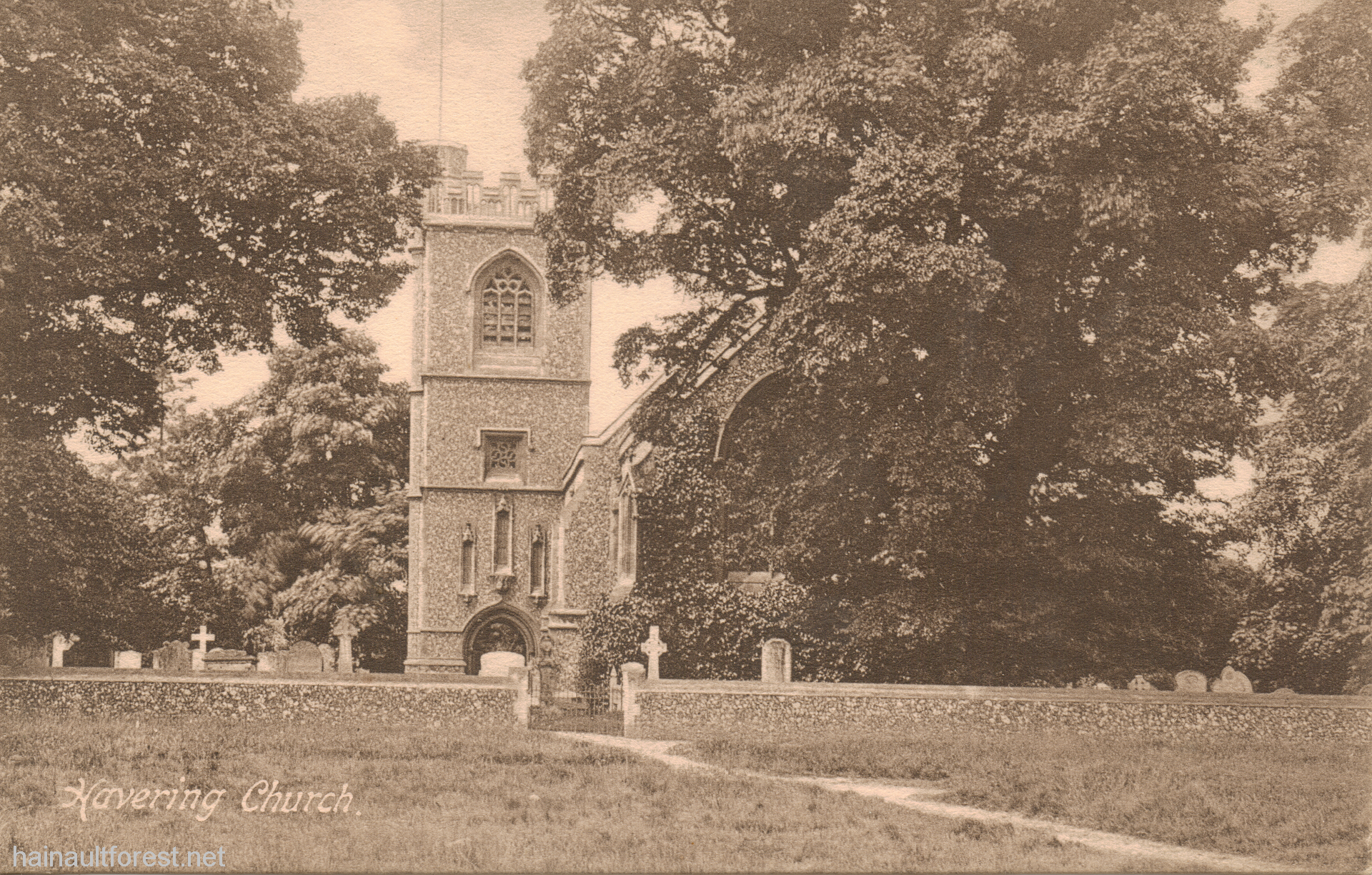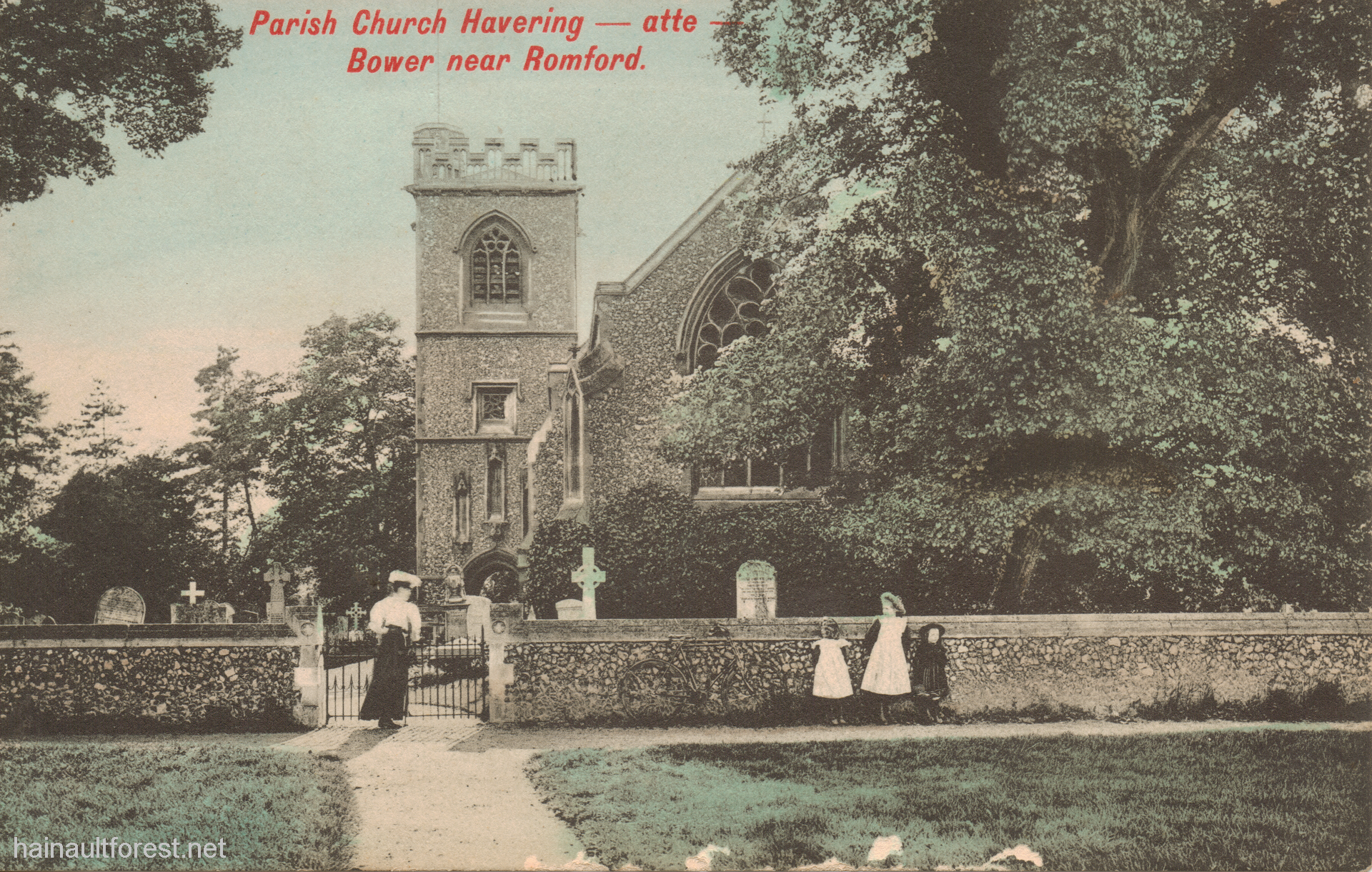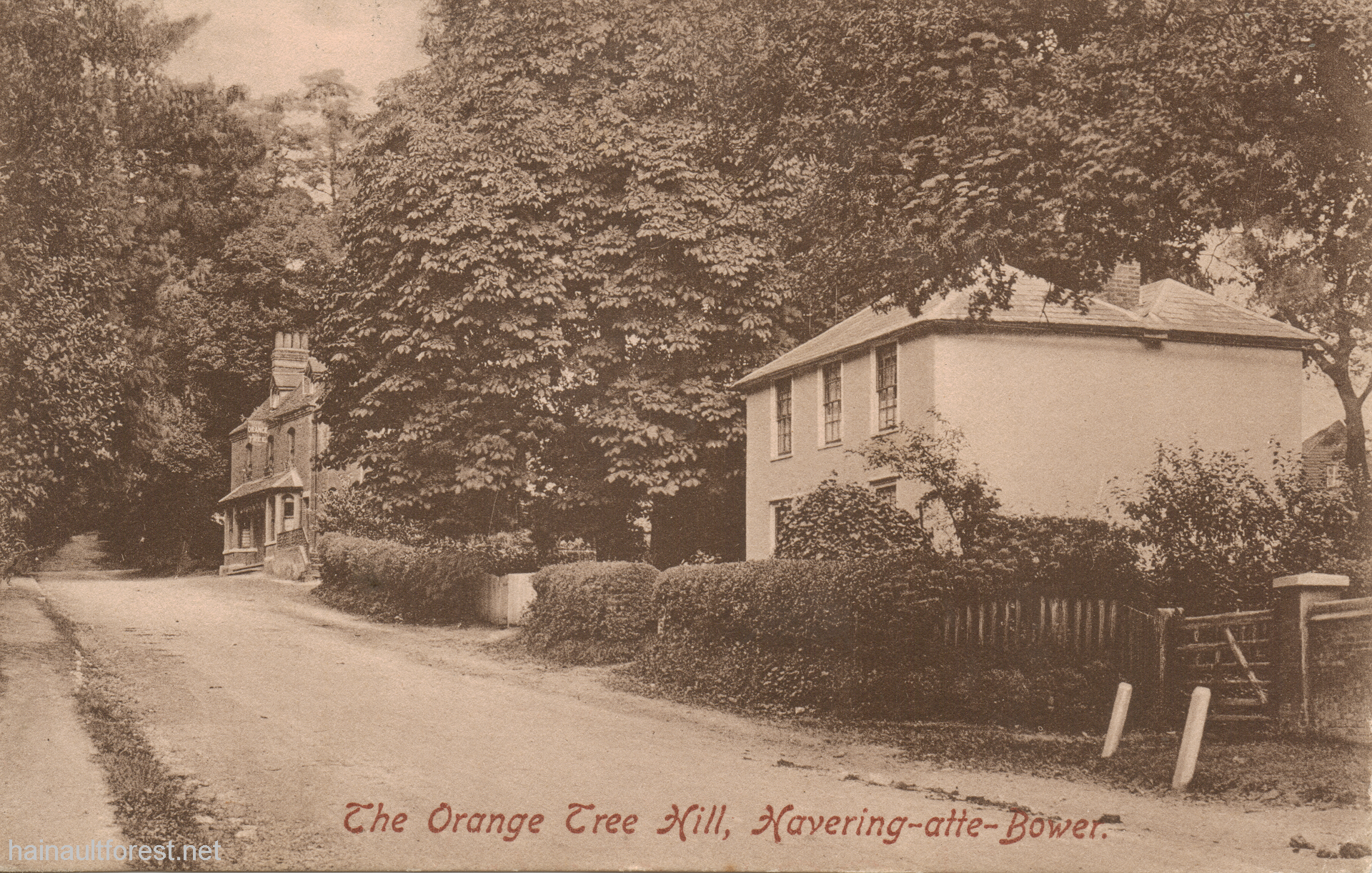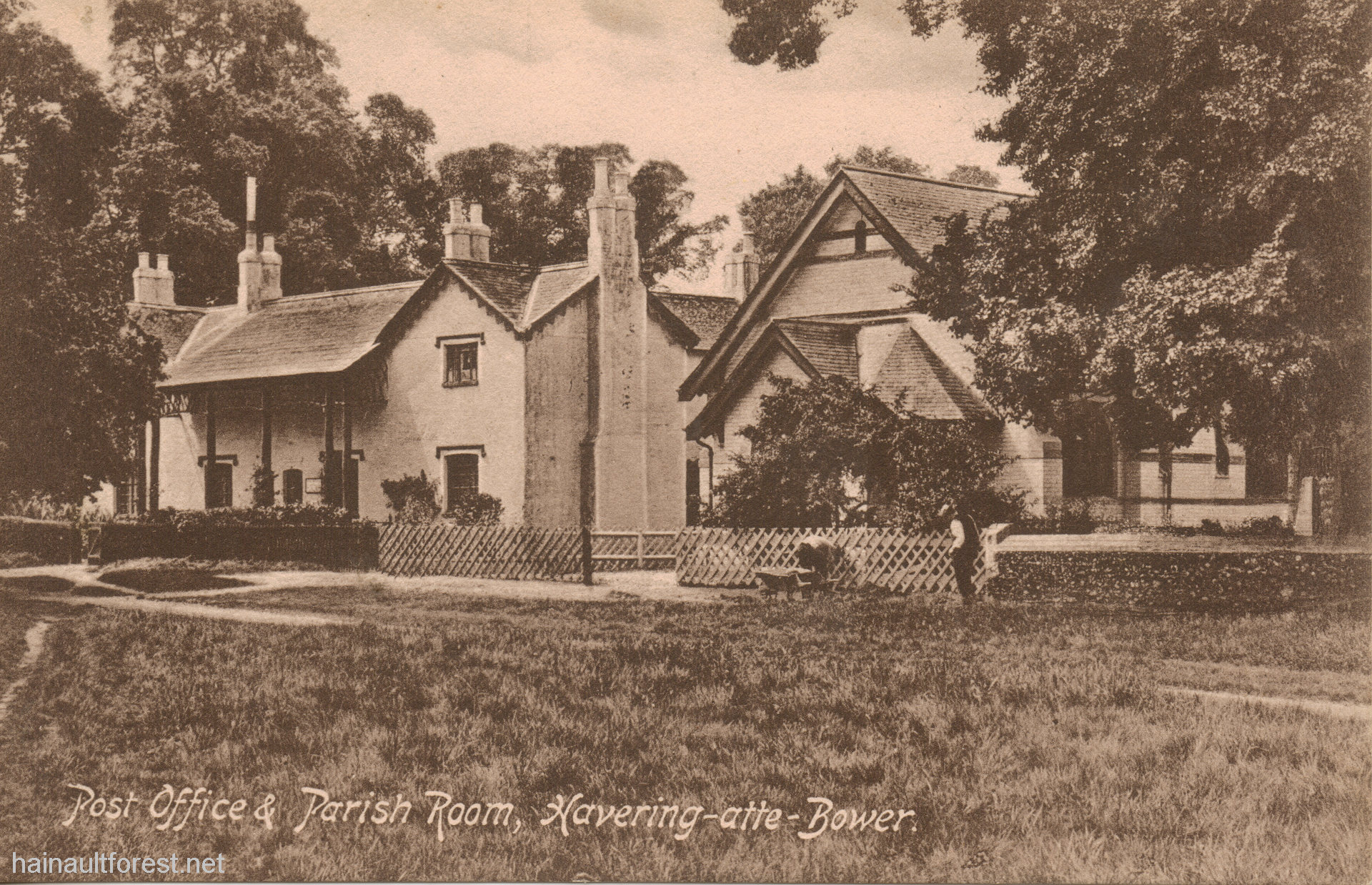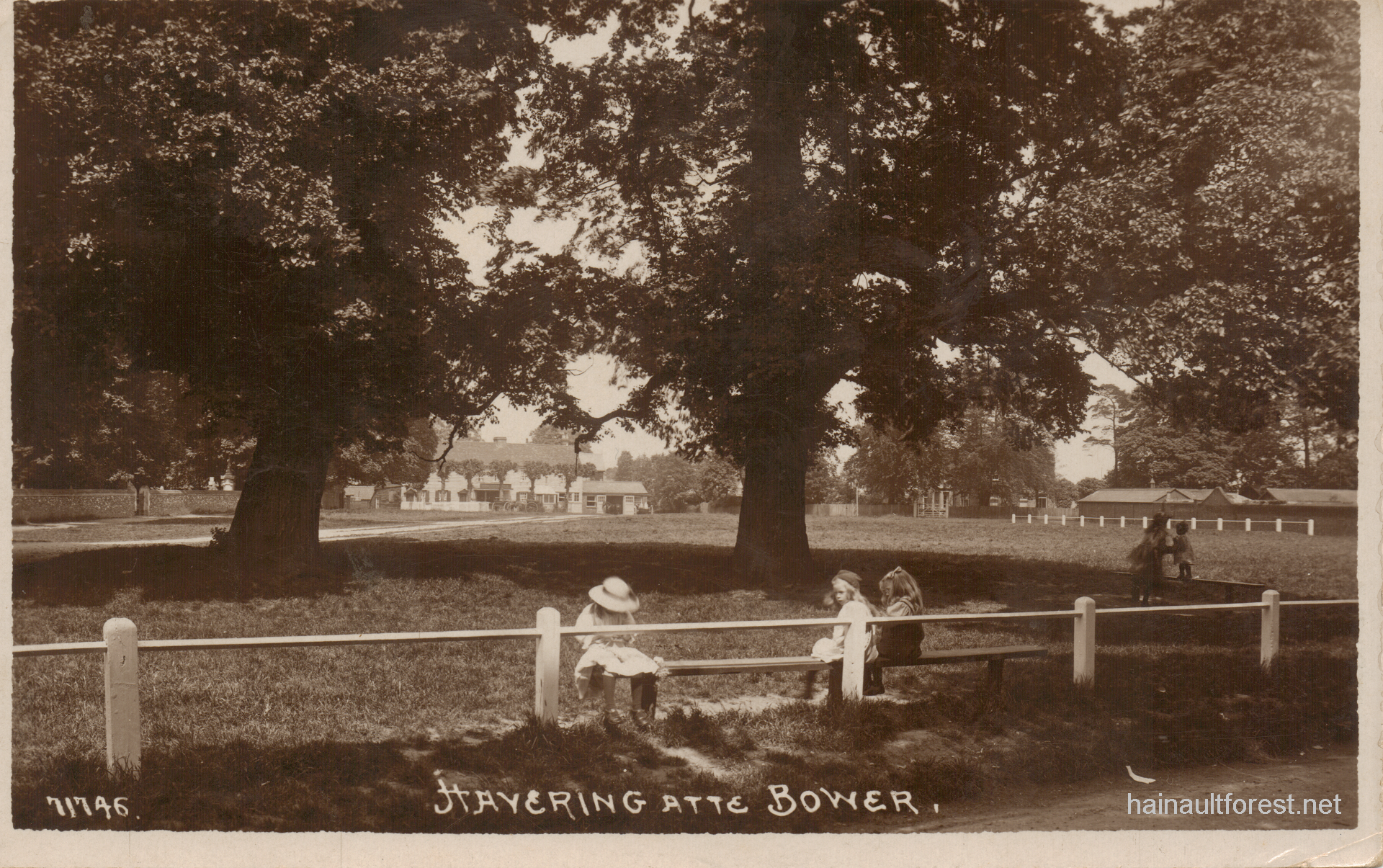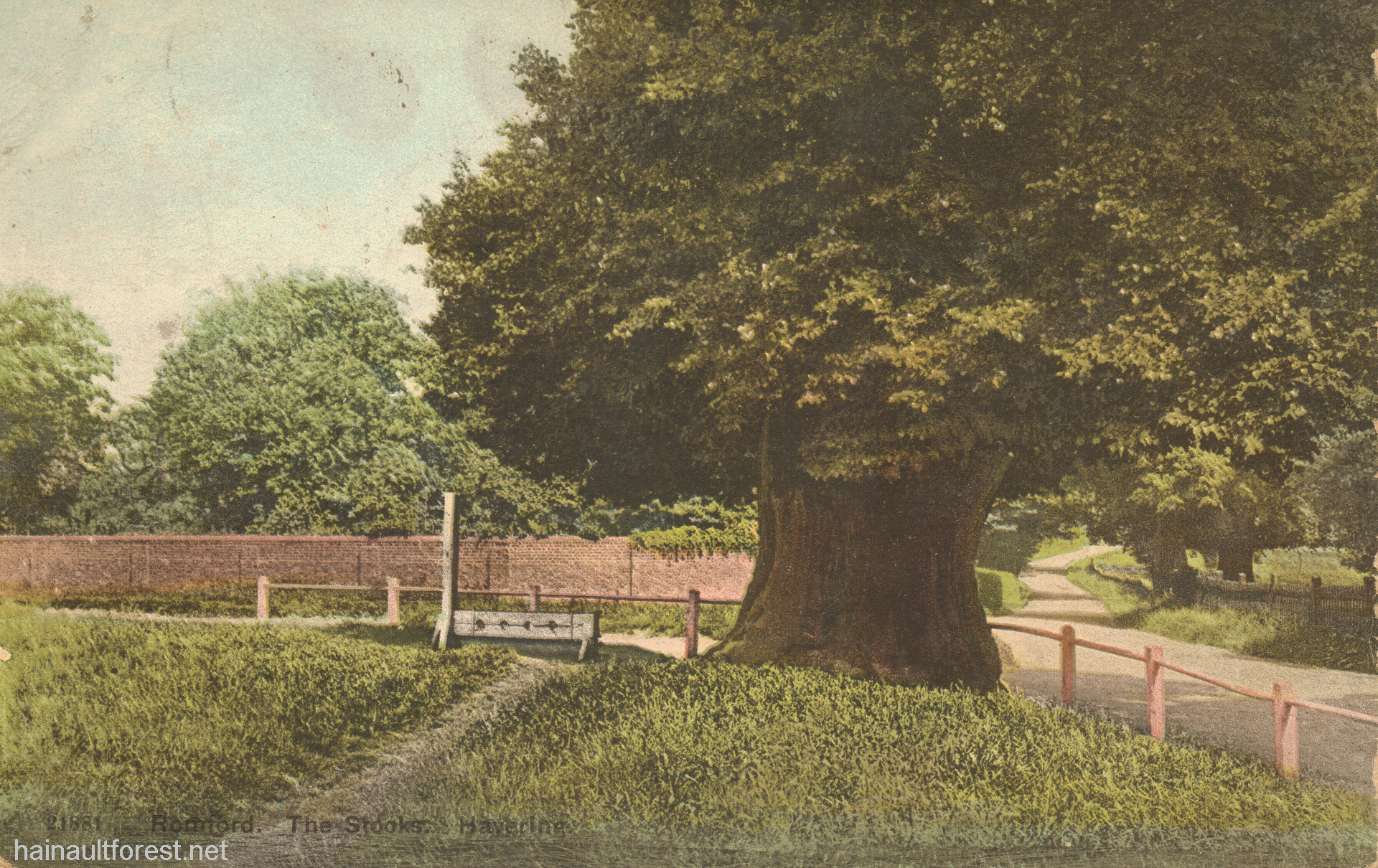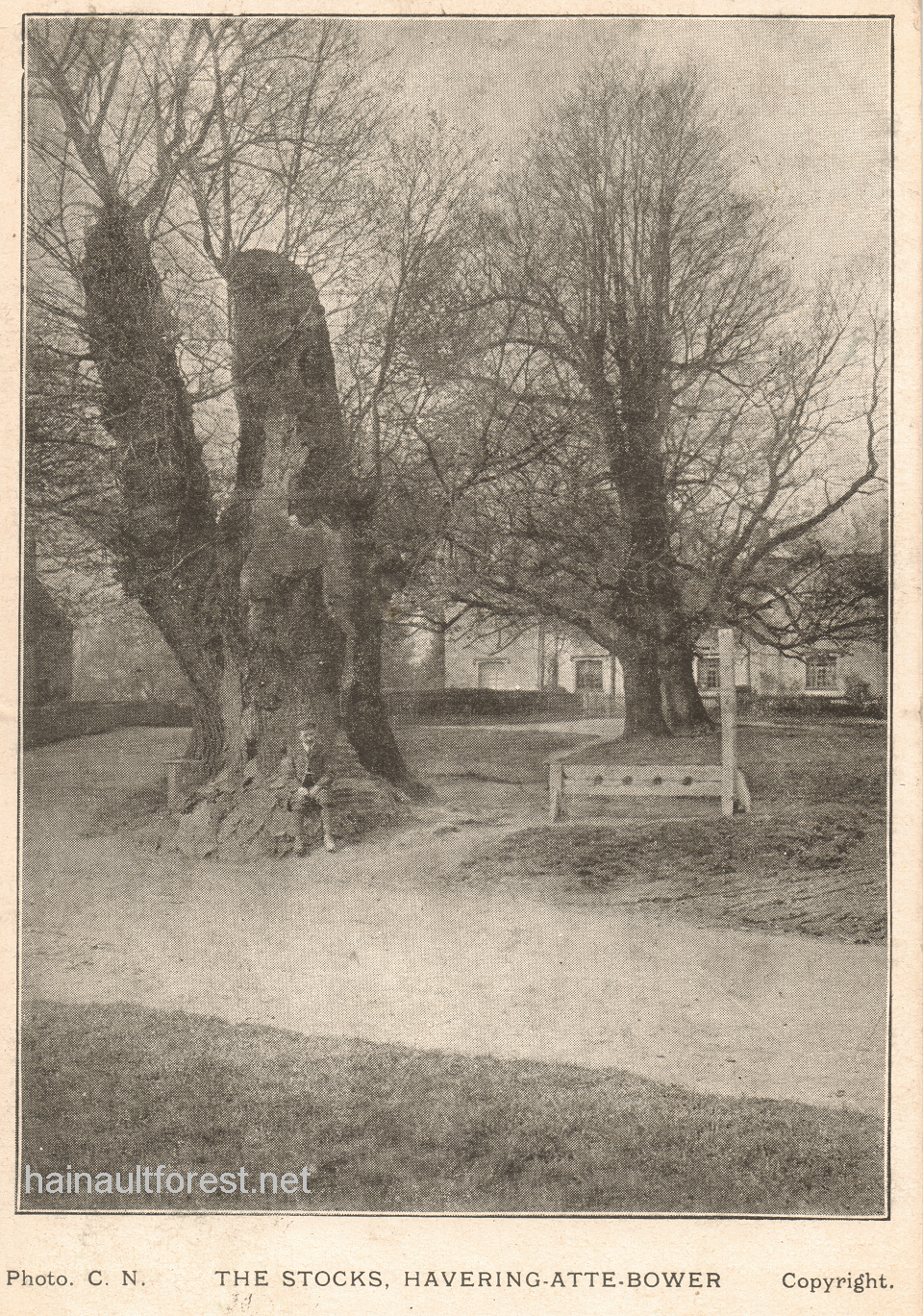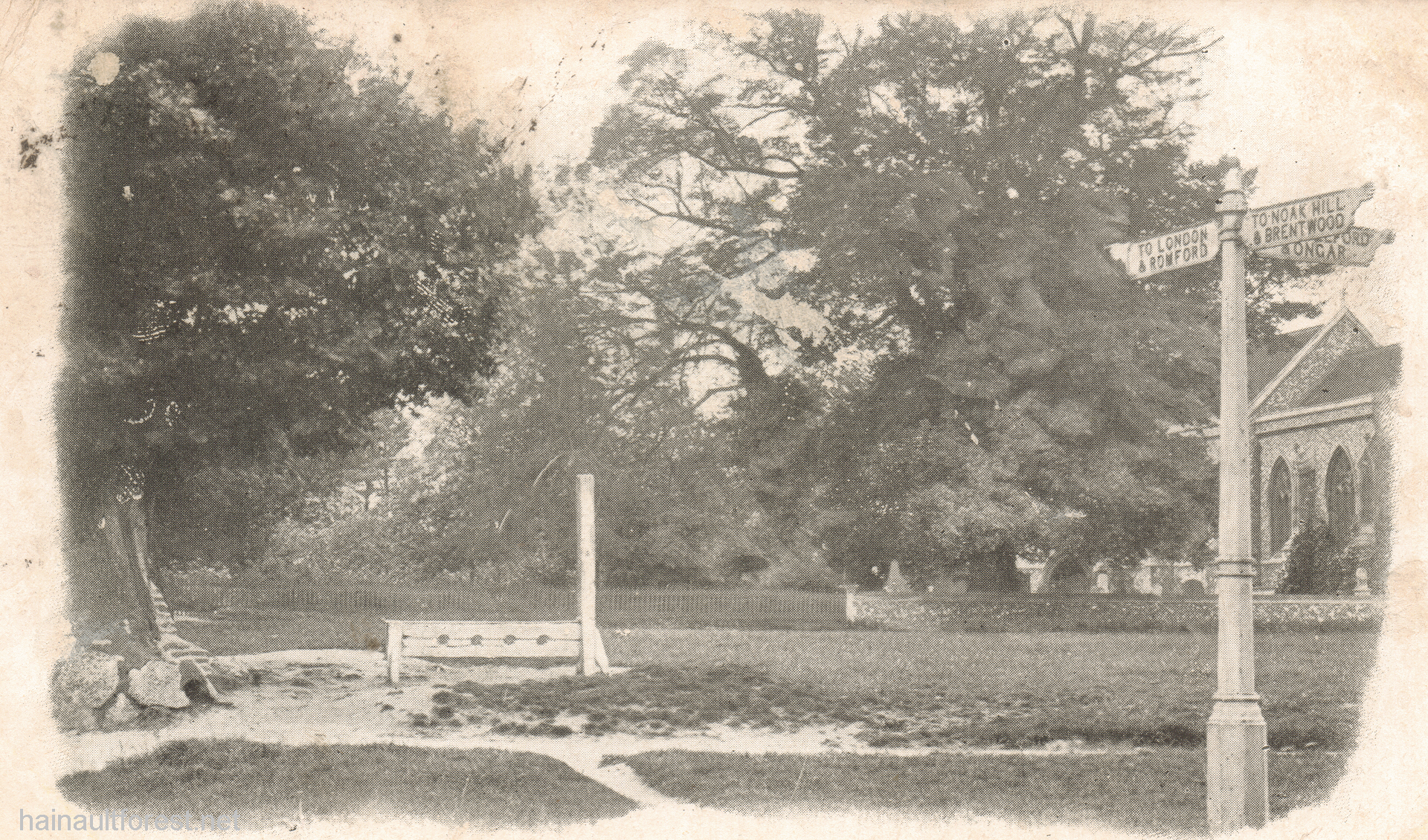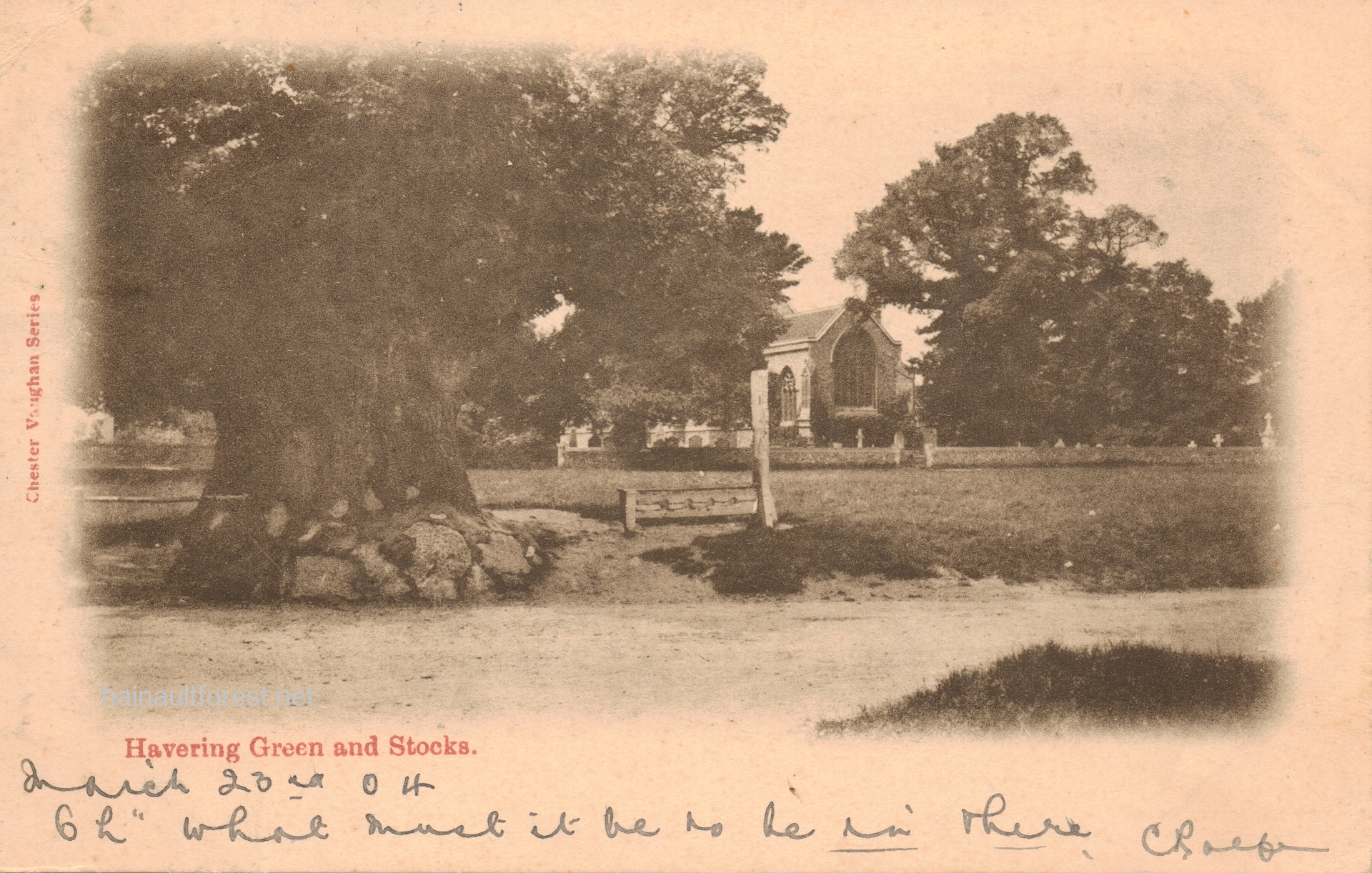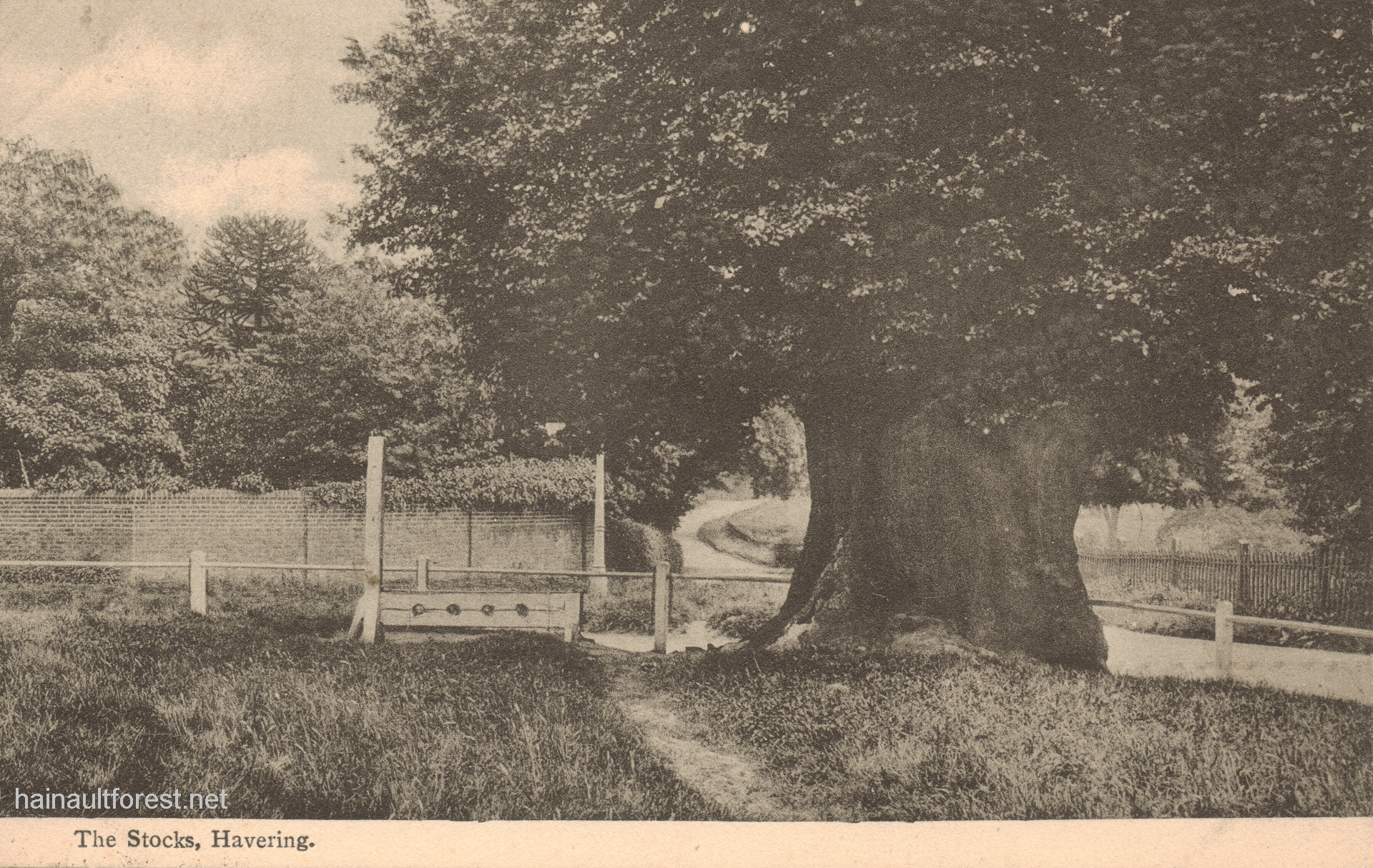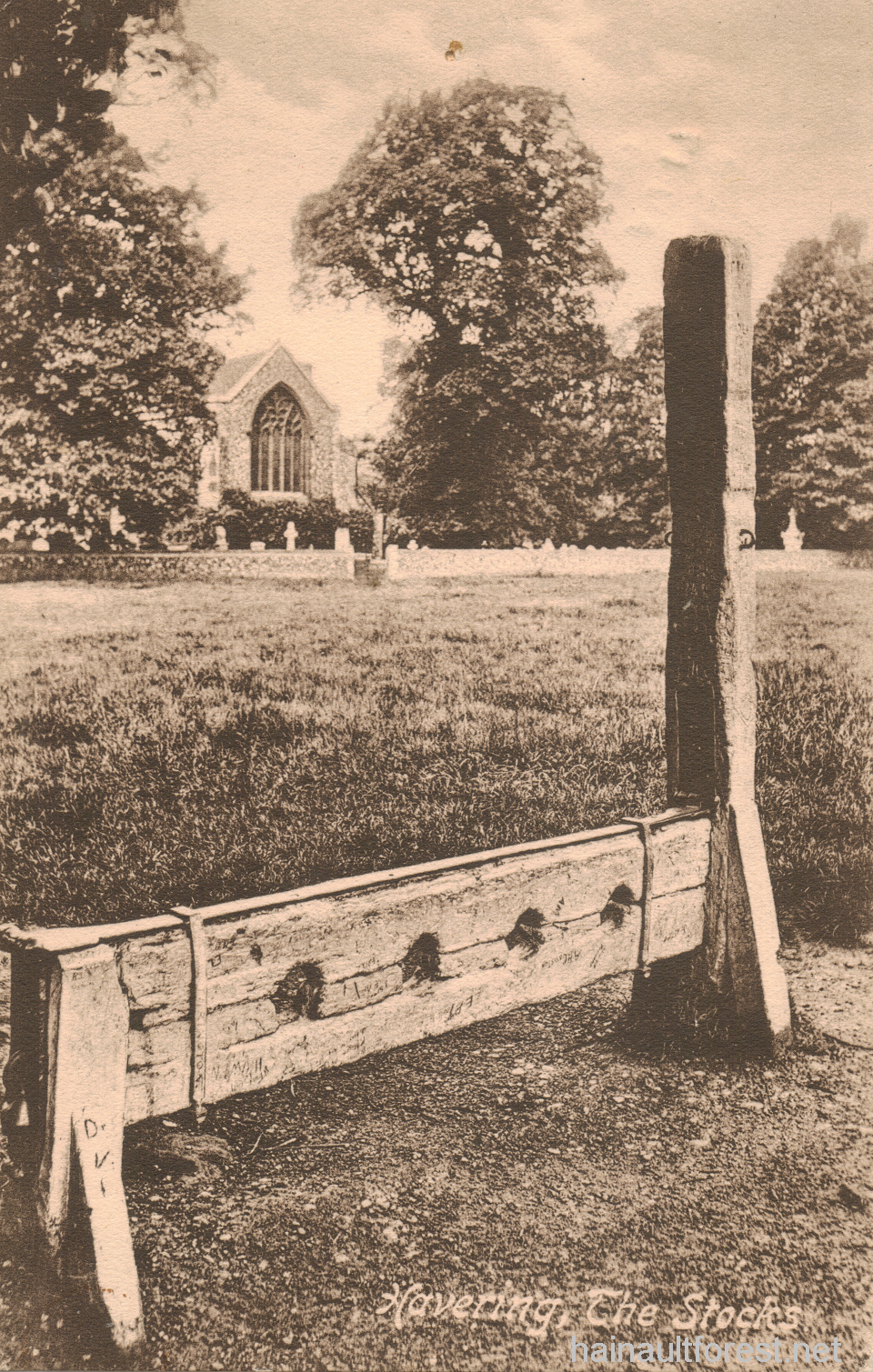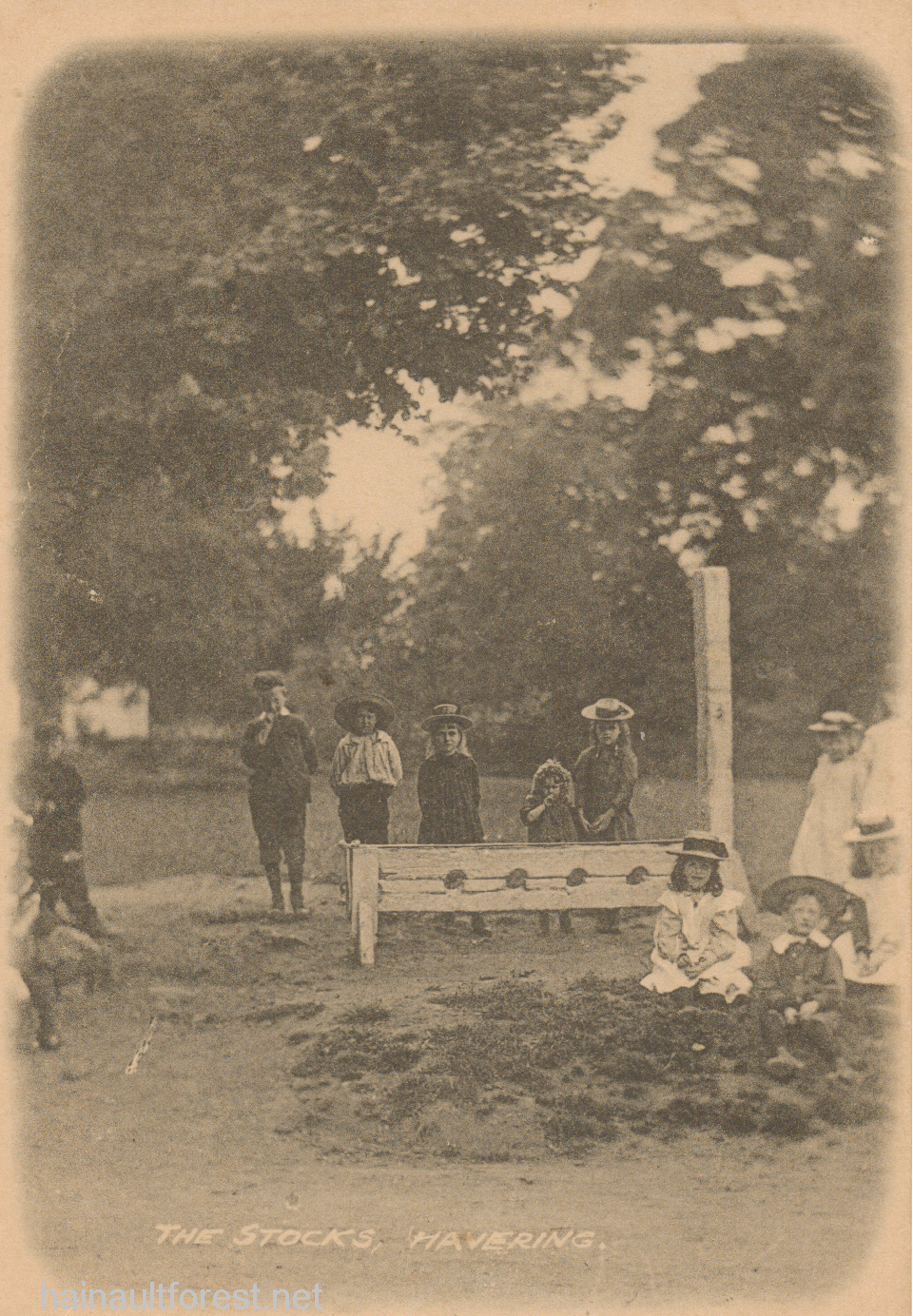HAVERING-ATTE-BOWER
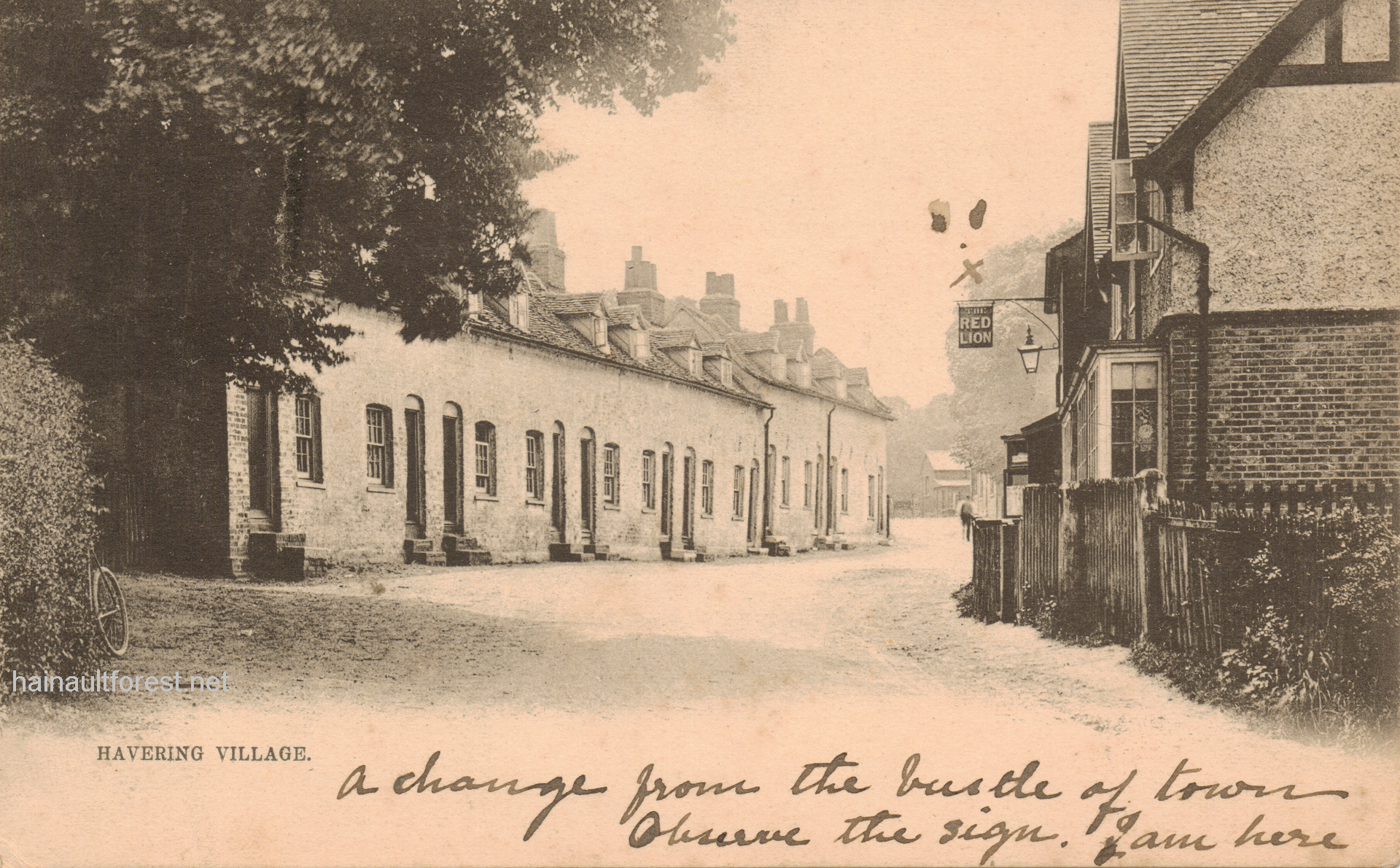
Postcard publisher: unknown.
'Elizabeth Row', a row of small apartments where agricultural labourers resided in the 18th century, stood opposite 'The Red Lion Inn'. The area shown above has now changed completely.
A personal message on this postcard reads: "Just to let you know I am alive and well. It is lovely weather now & I am staying over Sunday. Sorry we cannot go to Frank's hope he will be able to get auto's. I forget Miss King's address. Hope Mother and yourself are well. A change from the bustle of town. Observe the sign. I am here." Postmark: SP 9 05
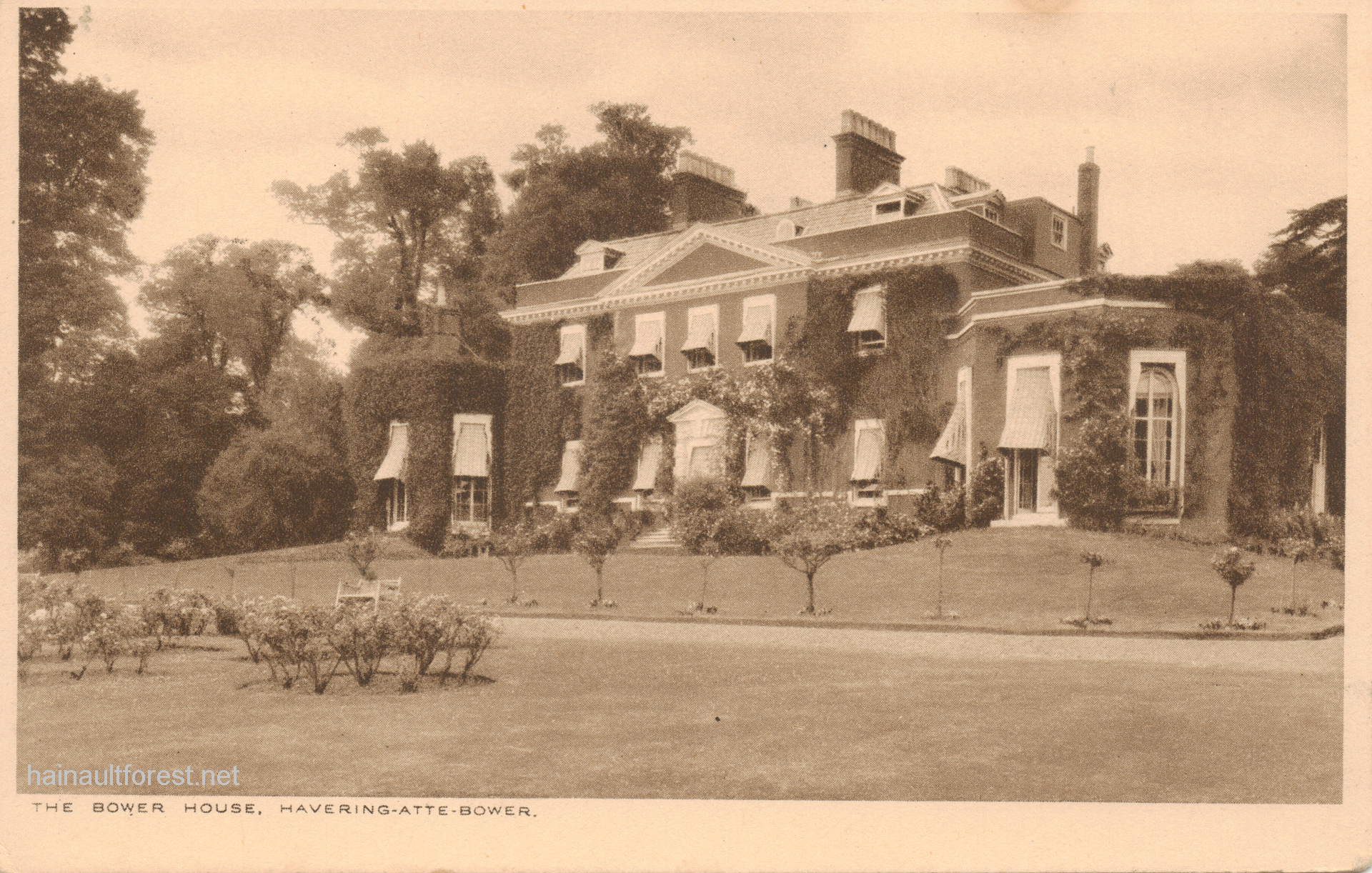
Postcard publisher: E. Hance, Post Office, Havering. Postcard: unused.
In 1729, John Baynes, a Sergeant-at-Law, had Bower House built on Orange Tree Hill with the intention to live there when he retired. However, once built, he did not live long to enjoy it, passing away on February 26th, 1736. A black marble monument was placed in the old Chapel to his memory. The house, originally called 'Monthavering', was designed by Henry Flitcroft and built on the remains of the Royal Palace of Havering Bower, incorporating some of the palace's old stones. The gardens were designed by Charles Bridgman, one of the leading landscape designers at that time. It became a Grade 1 listed building.
Bower House had the luxury of an Ice-house meaning that family and guests were able to enjoy cold drinks containing pieces of ice during summer months. Refrigerators did not exist in the 18th century, but this was made possible because servants would stand thigh-high in freezing water during winter breaking layers of ice from frozen pond surfaces so it could be stored away. Made of red brick and sunk into the ground, the dome-roofed ice-house, about three metres diameter, was covered in earth which provided excellent insulation from the sun. A sturdy oak door with heavy padlock kept thieves and animals out.
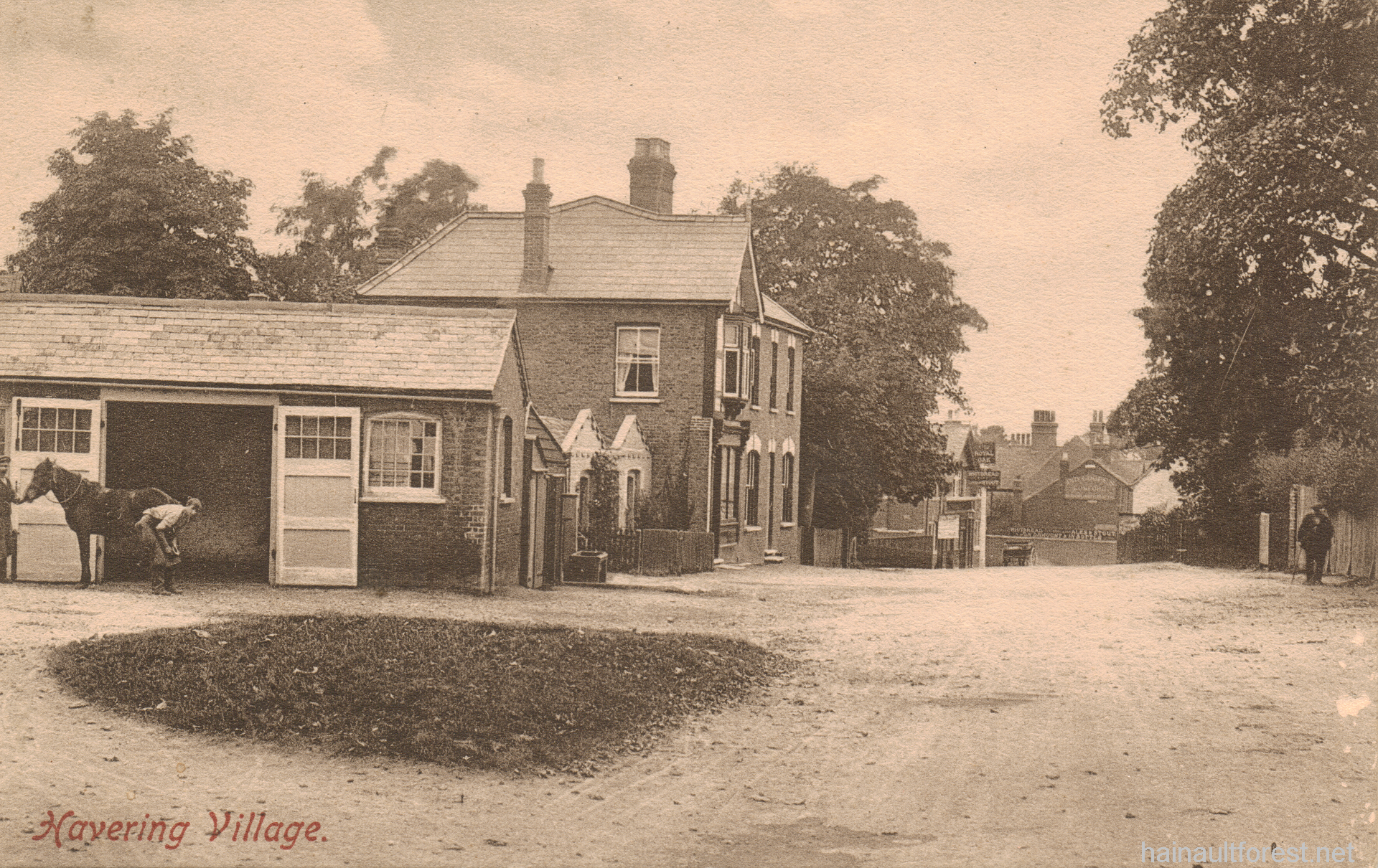
Postcard publisher: unknown. Postcard: unused.
In the distance there is a sign for 'The Royal Oak', a pub that sold Whitbread ales and stout. It was previously known as 'The Old Oak'. The pub closed in 2019.
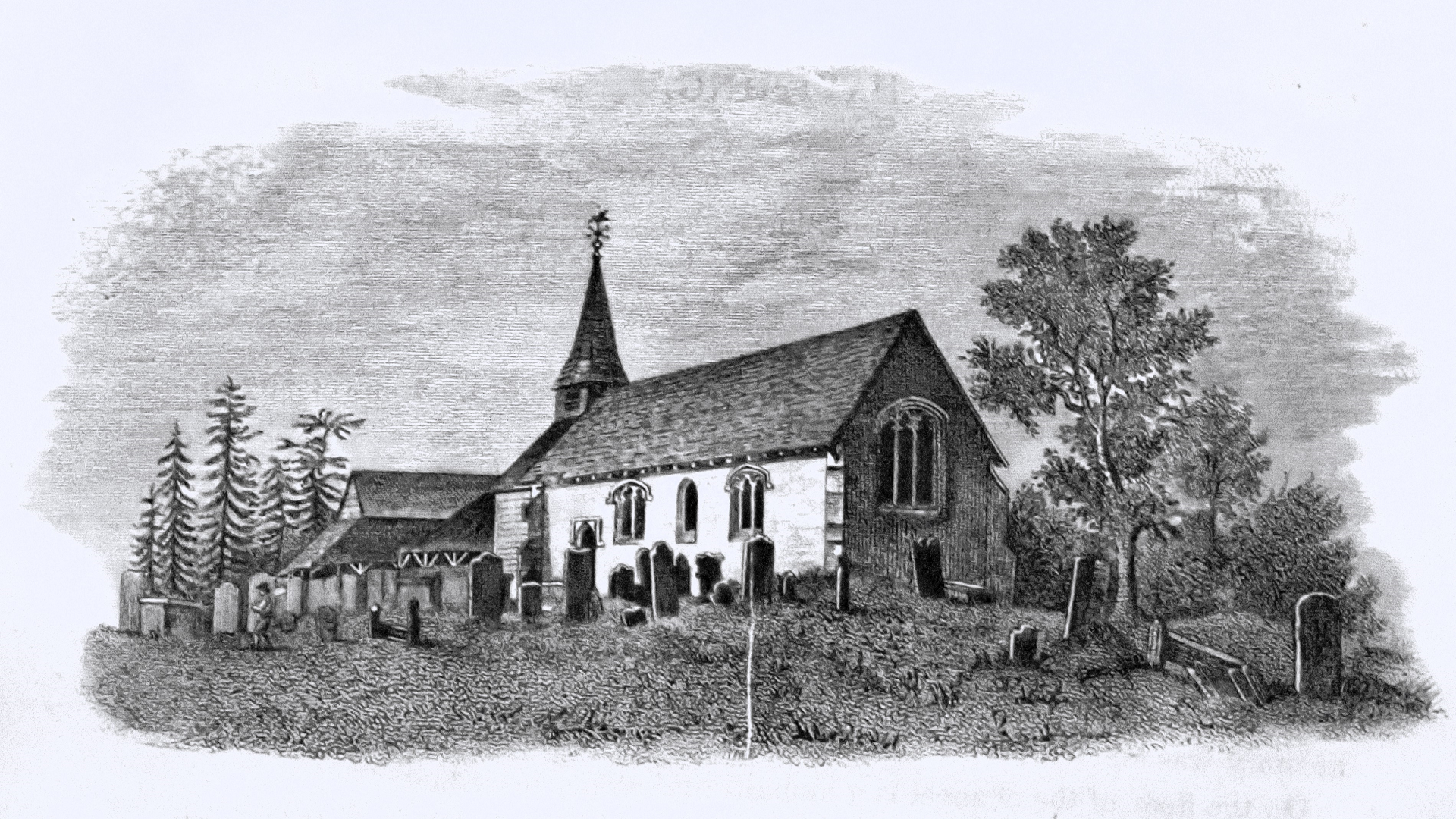
Picture of Havering Chapel from Elizabeth Ogborne's 'The History of Essex', 1814.
A small medieval Chapel dedicated to St. Mary (later to St. John the Evangelist) stood west of Havering Green, with the parsonage, and a school left by Dame Anne Tipping, opposite. The school was for the perpetual education of twenty poor boys and girls. Dame Anne was the daughter of Colonel Thomas Cheeke, of Pirgo, governor of the Tower of London. The chapel was demolished in 1876 to be replaced with a bigger church.
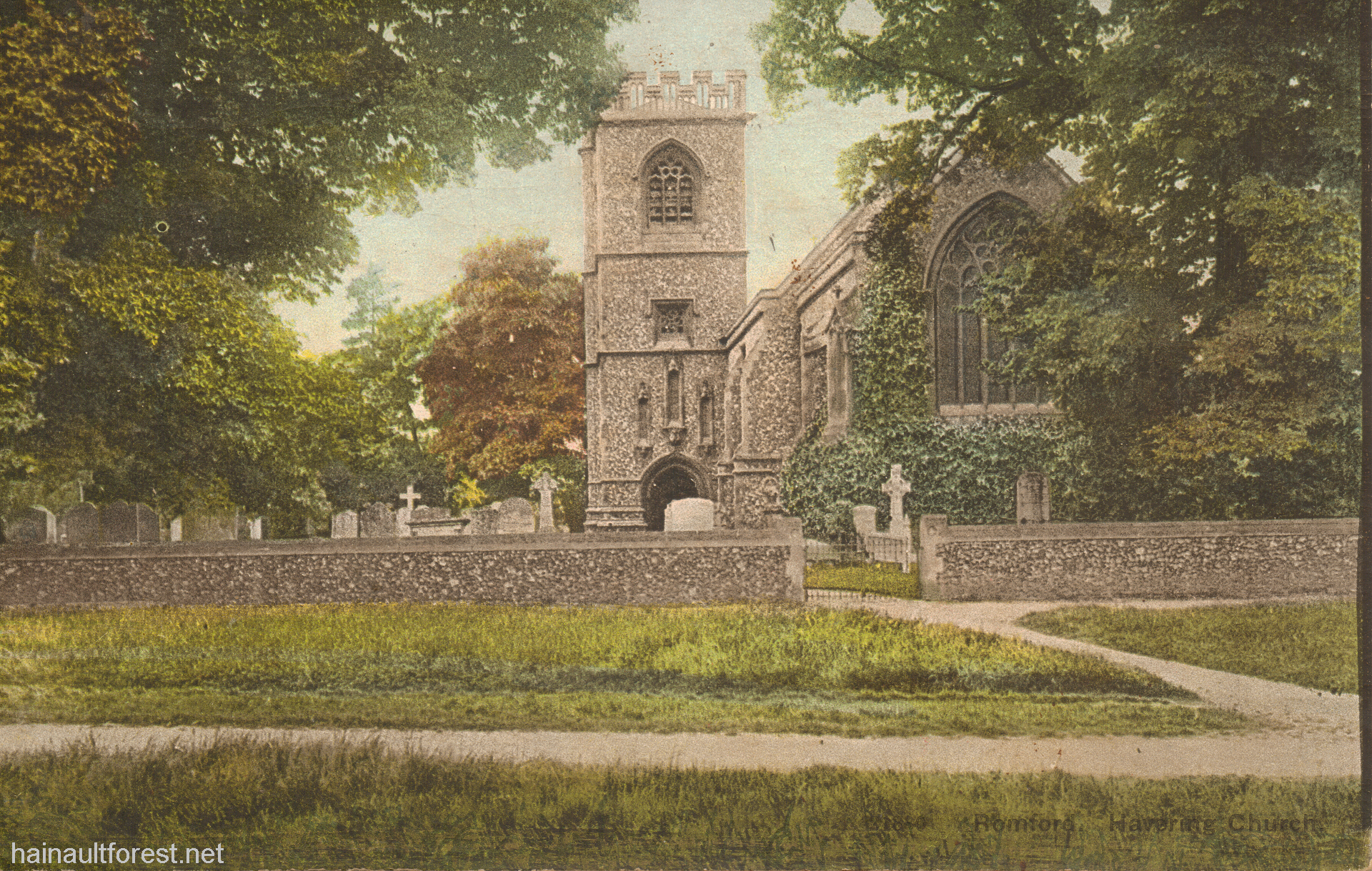
Postcard publisher: unknown.
A new church, constructed with brick faced with flint, was built by Basil Champneys on the site of the demolished chapel and dedicated to St. John the Evangelist in 1878.
"Dear Aunt, Just a PC to you all, which I hope will find you all well and pleased to say I am well myself, but I am in hospital again with my leg, & going on nicely again. With love to all from your Nephew, Alfred." Postmark: 9 SEP 4.
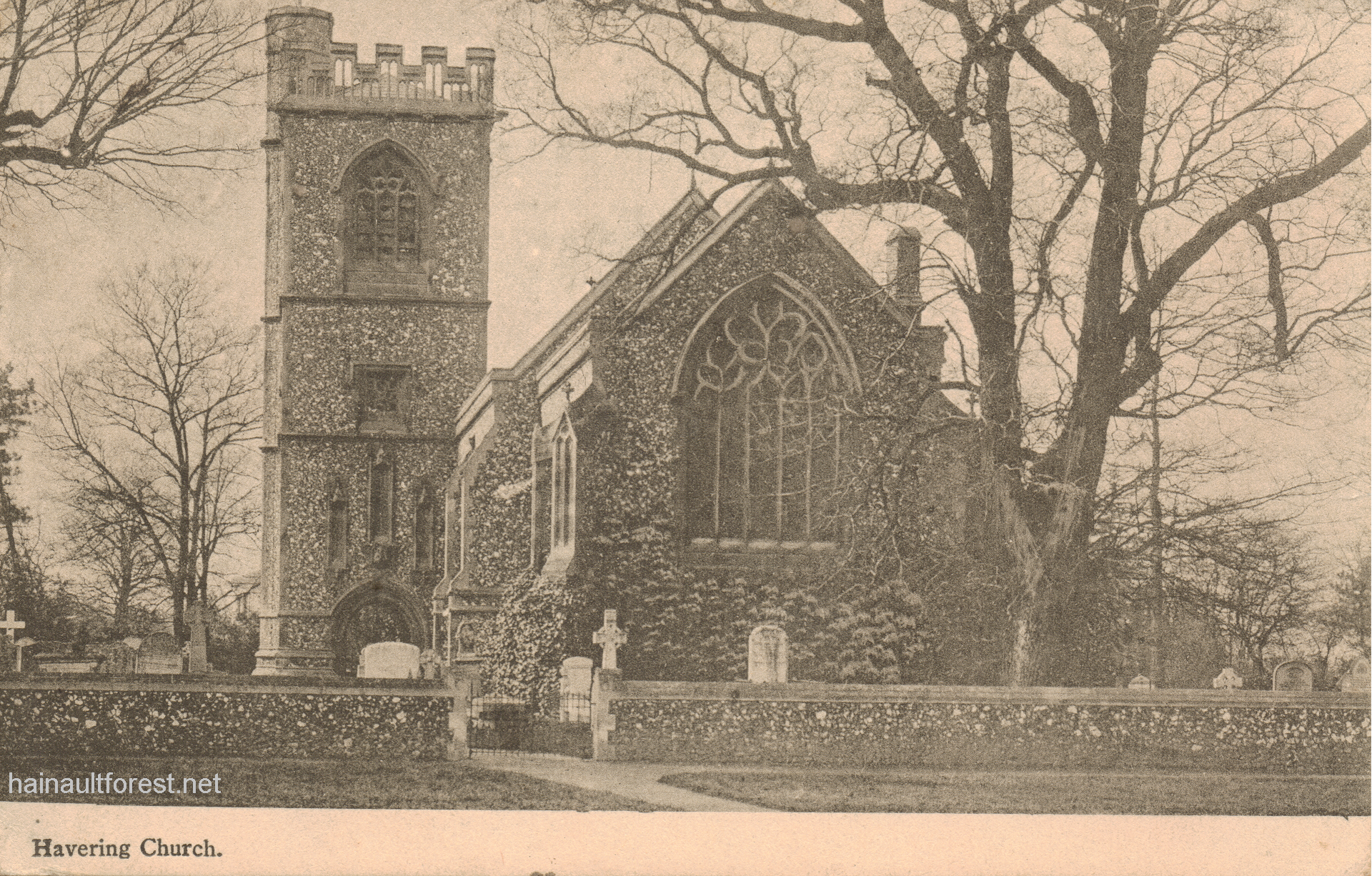
Postcard publisher: unknown.
"Dear E, Many thanks for PC. Expect you don't find much time for yourself. I tried to find you last Sunday week. We found the street but that was all. We both forgot the number and had to return home. We went hiking Saturday afternoon, went through Havering called at this church and finished up the walk on Sunday with going to see your Mother. Quite a nice little holiday. H will write soon. Hoping you are keeping well. Love John."
Postmark: OC 10 05
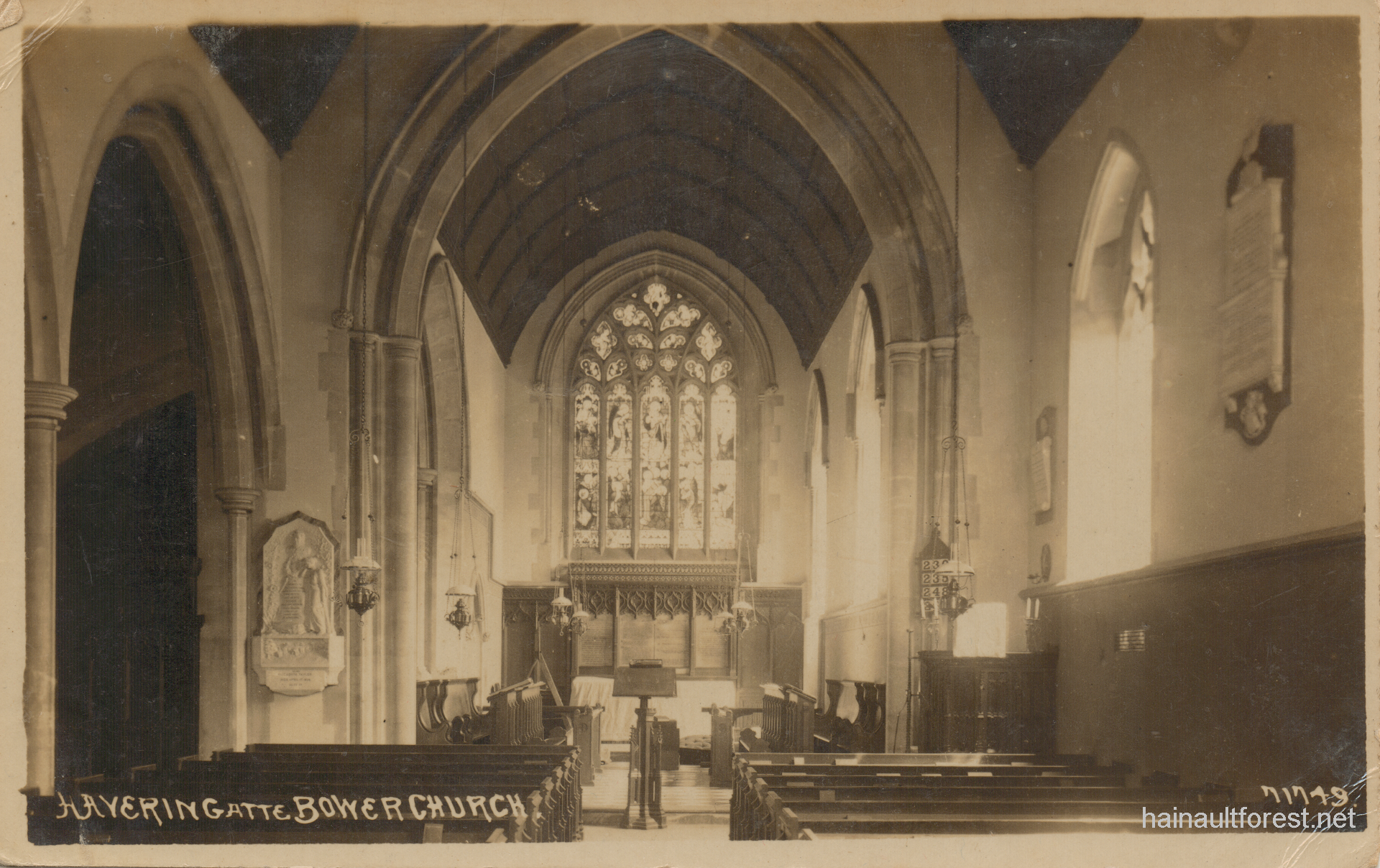
Postcard publisher: unknown.
"My Dear Nellie, Just a PC. Hoping you all are well. Glad to say we are fairly well. I have just had a little walk & been round the garden. Thought you would like this P.C. It is very good. Love to you all from us both, Bertie" Postmark: OC 6 20
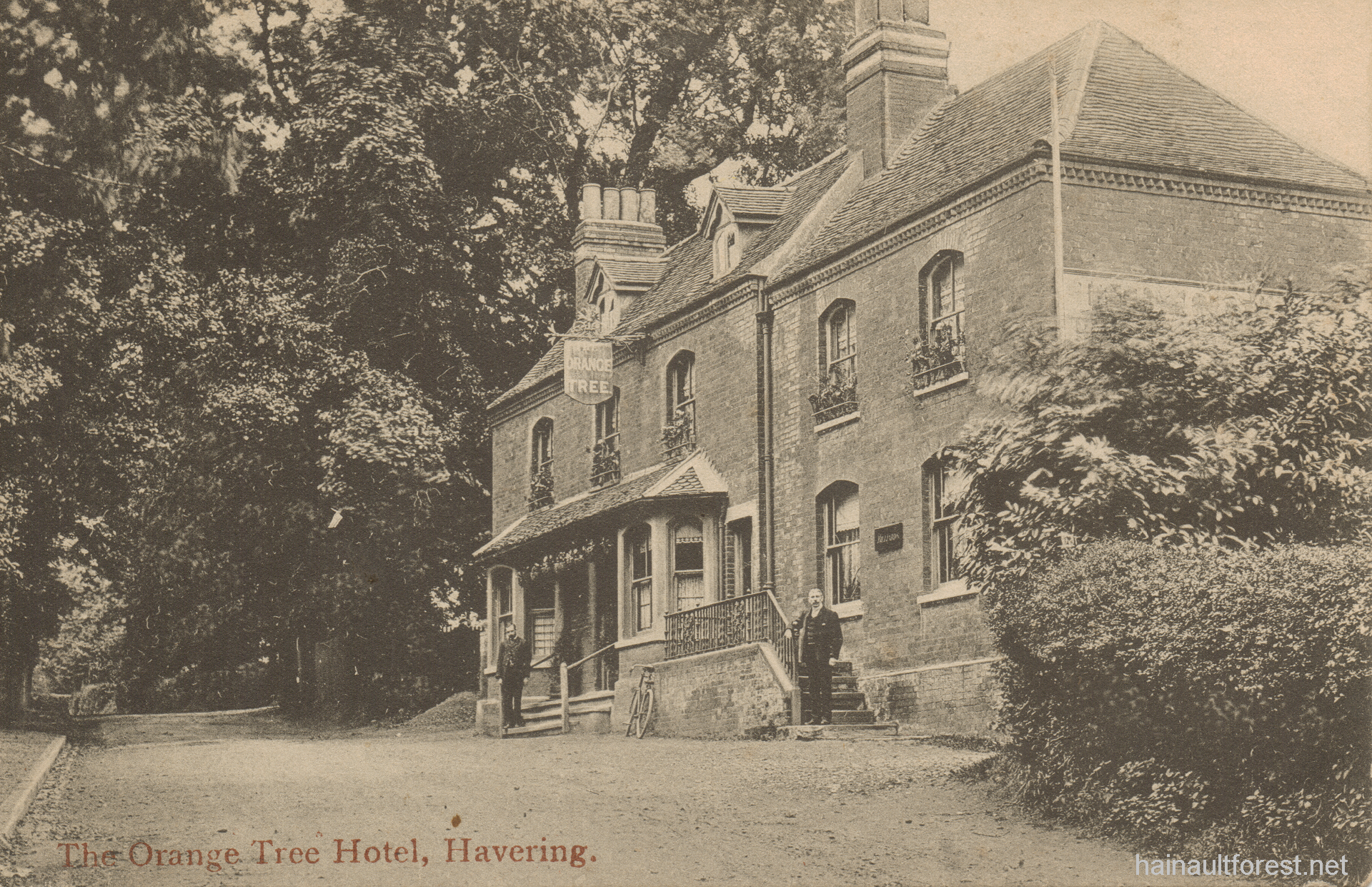
Postcard publisher: E. & C. Cotton, London, S.W.
'The Orange Tree' was a name chosen to show support for William of Orange during the revolution of 1688.
"We wish your family 'Happy Returns' from Claude" Postmark: DE 8 07
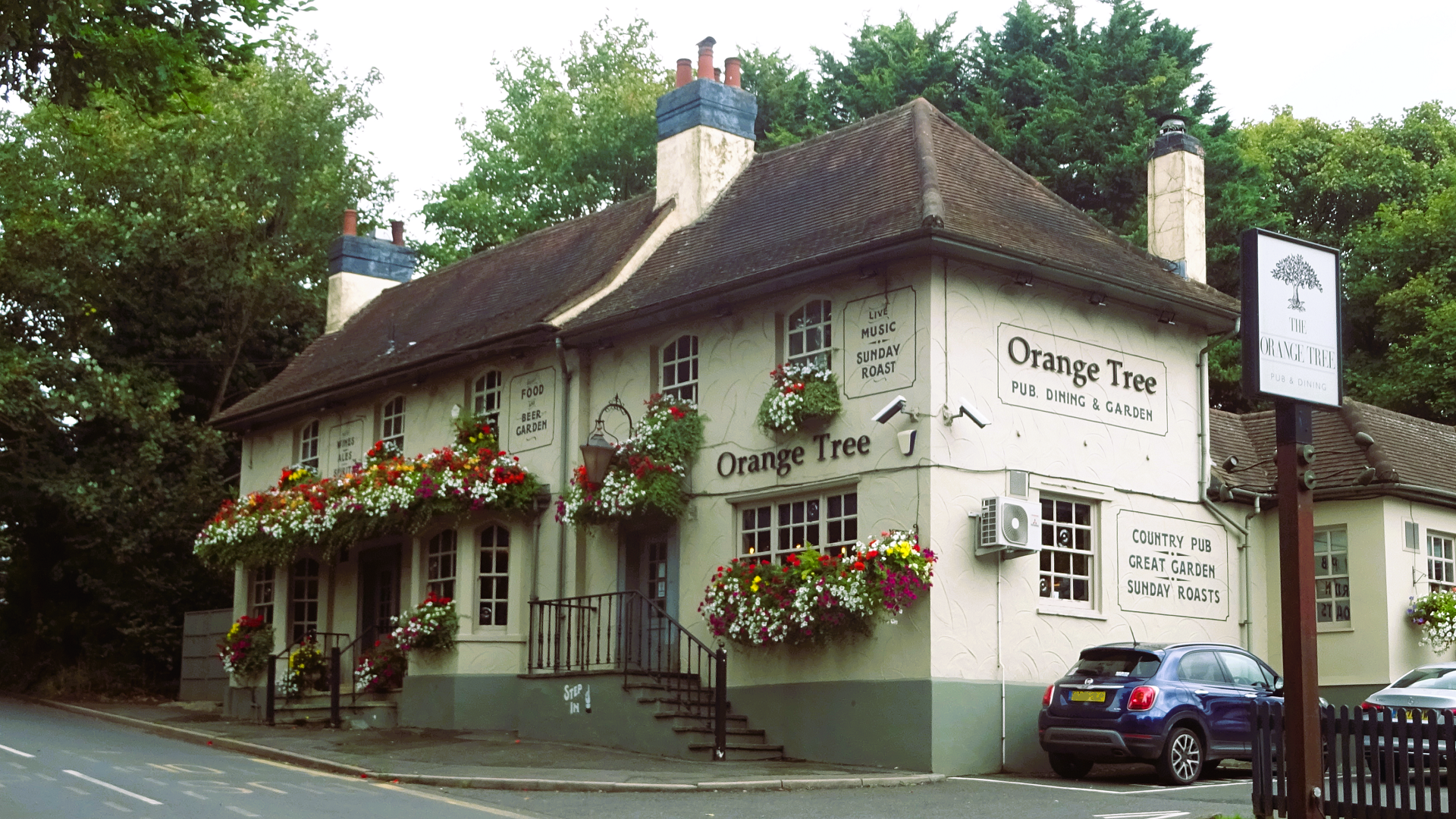
The Orange Tree © Raymond Small 10/09/2024
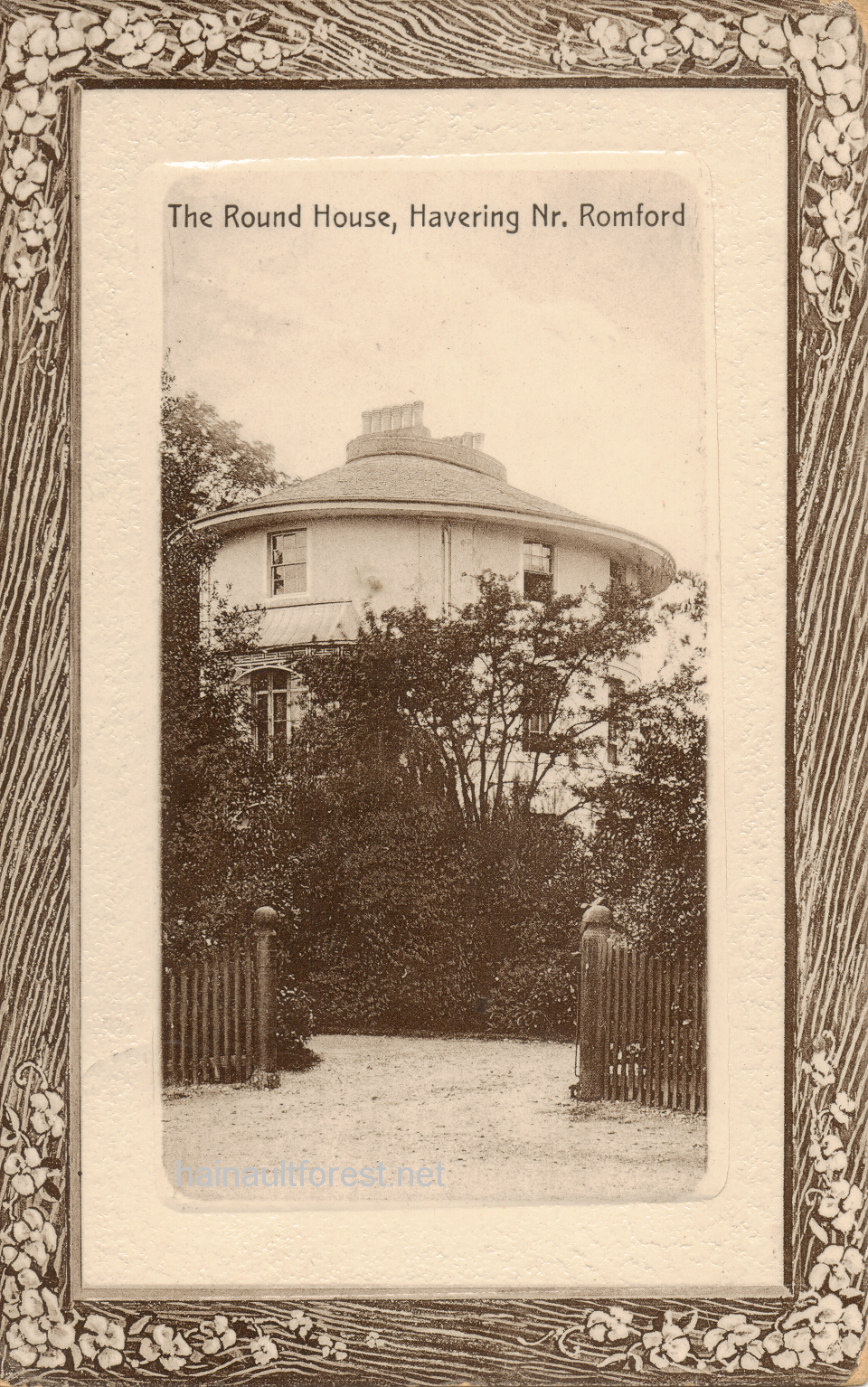
Postcard publisher: Romford Recorder
The Round House on Broxhill Road is a Grade II listed building built between 1792 and 1794 by John Plaw for William Sheldon. Reverend Joseph Hardwick Pemberton was born in the house in 1852 and lived there with his sister Florence until his death in 1926. Pemberton was a keen rose grower and became president of the Royal National Rose Society in 1914. He established Pemberton Nursery in Romford which sold up to 40,000 roses annually.
"Dear Mum, We hope to catch the 3.50 train from Stratford. We are quite excited over it. Just off to work with love to all and yourself. Kiss Phyllis and baby boy for us all, in haste your loving daughter Lizzie." Postmark: DEC 1 11
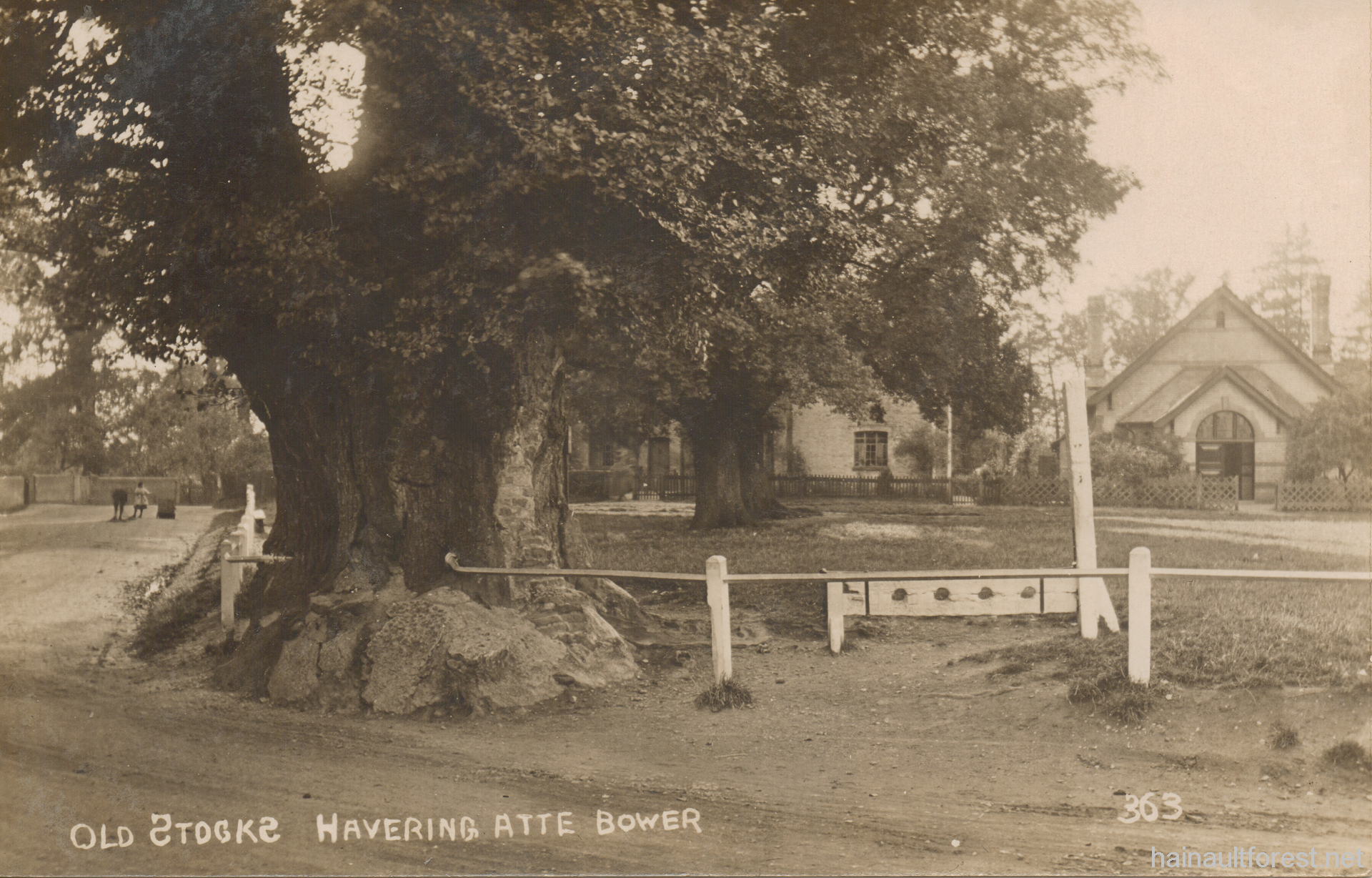
Postcard publisher: unknown.
Edward the Confessor had a strong connection with Havering. It is claimed that he was stopped by a beggar asking for money when visiting the area. The King had no money on him, but pulled a ring off his finger, giving it to the poor man, saying: "Have ye ring". The ring was later returned to the King by two pilgrims after they had an encounter with St John the Evangelist while on a holy expedition. Another story goes that one night while at Havering nightingales sang so loud that they disturbed the King meditating. He prayed for them to fall silent and nightingales have never been heard in Havering since.
Message on postcard: "The tree under which King Edward (the Second) the Confessor prayed and was rebuked by an angel. He died in the year 1066 therefore in 1923 the tree had still lived on. How old it was when he died we know not. Probably in this year 1923 it is nearly 1000 years old. This Elm is still very green in summer." Not posted.
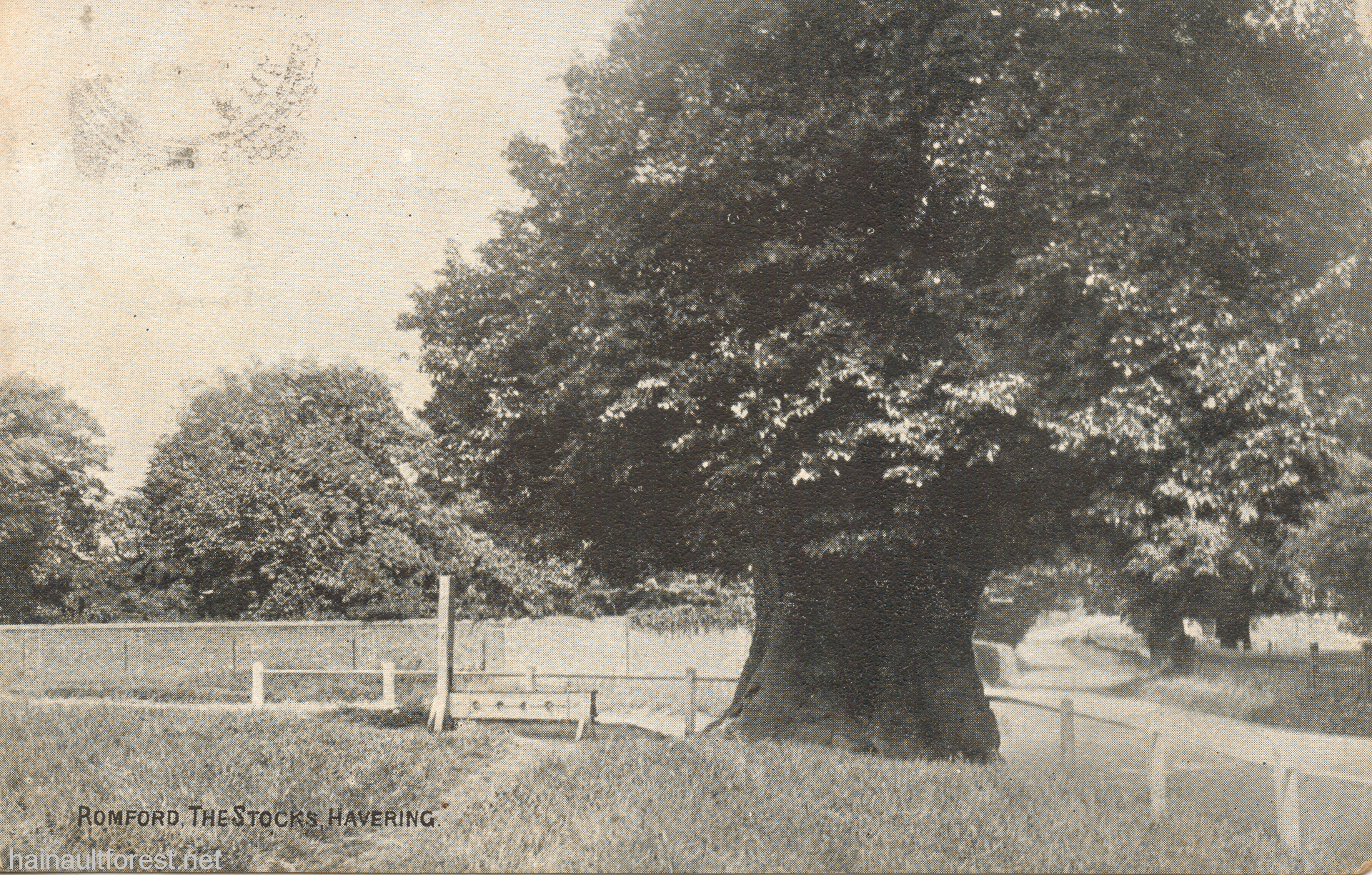
Postcard publisher: unknown.
Every town once had to provide and maintain a set of stocks to punish people for minor crimes such as public drunkenness, brawling, or dishonest trading. Feet were locked in the stocks with the offender sitting up to face the mocking crowd.
"Dear A, Am afraid we shall not be able to get over Sunday morning. Sorry Amy could not get over perhaps she can manage it next week. Sonny seems to be getting on nicely now. J." Postmark: SP 17 (19)04.
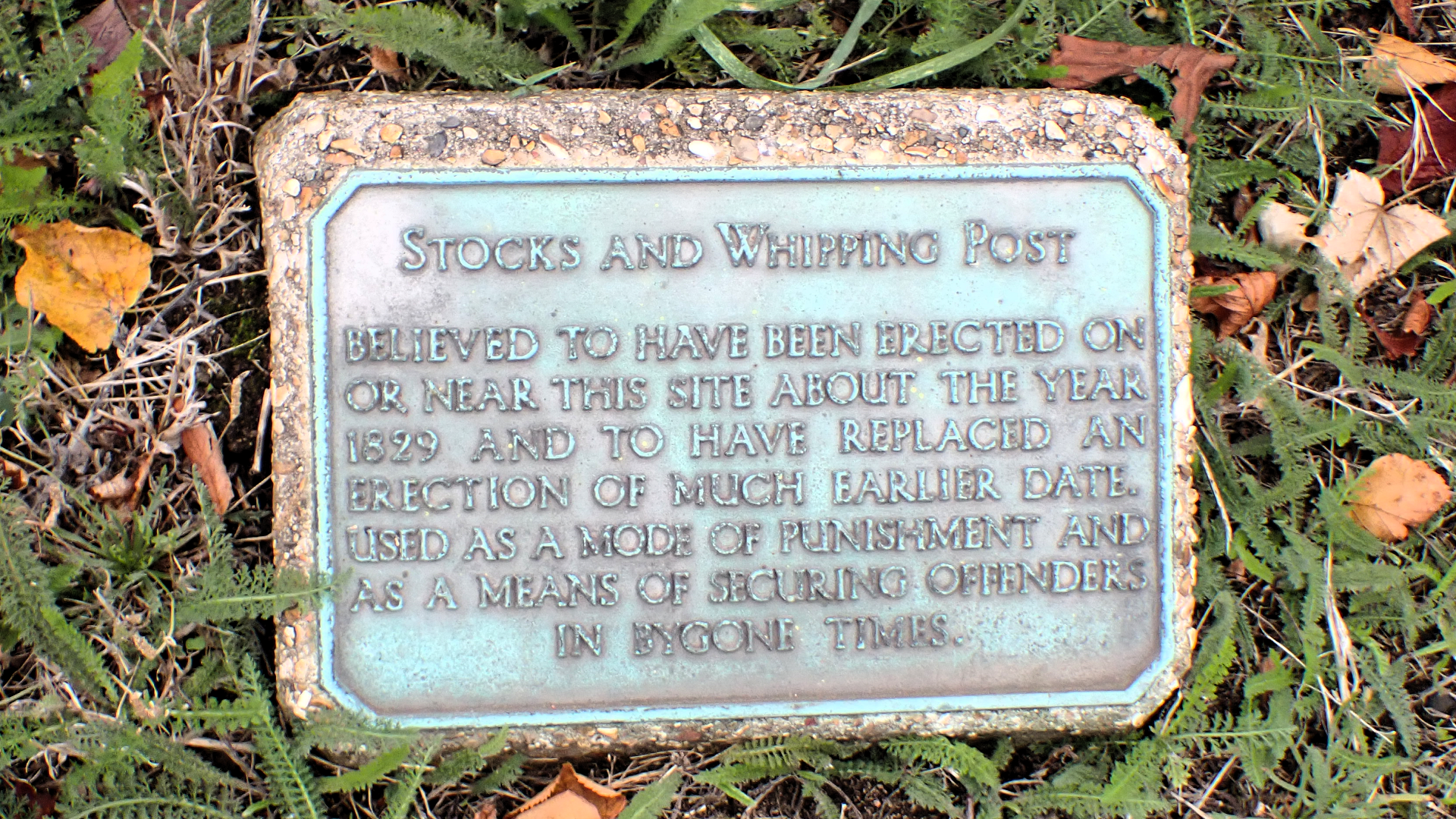
Sign © Raymond Small 10/09/2024
"Stocks and Whipping Post. Believed to have been erected on or near this site about the year 1829 and to have replaced an erection of much earlier date. Used as a mode of punishment and as a means of securing offenders in bygone times."
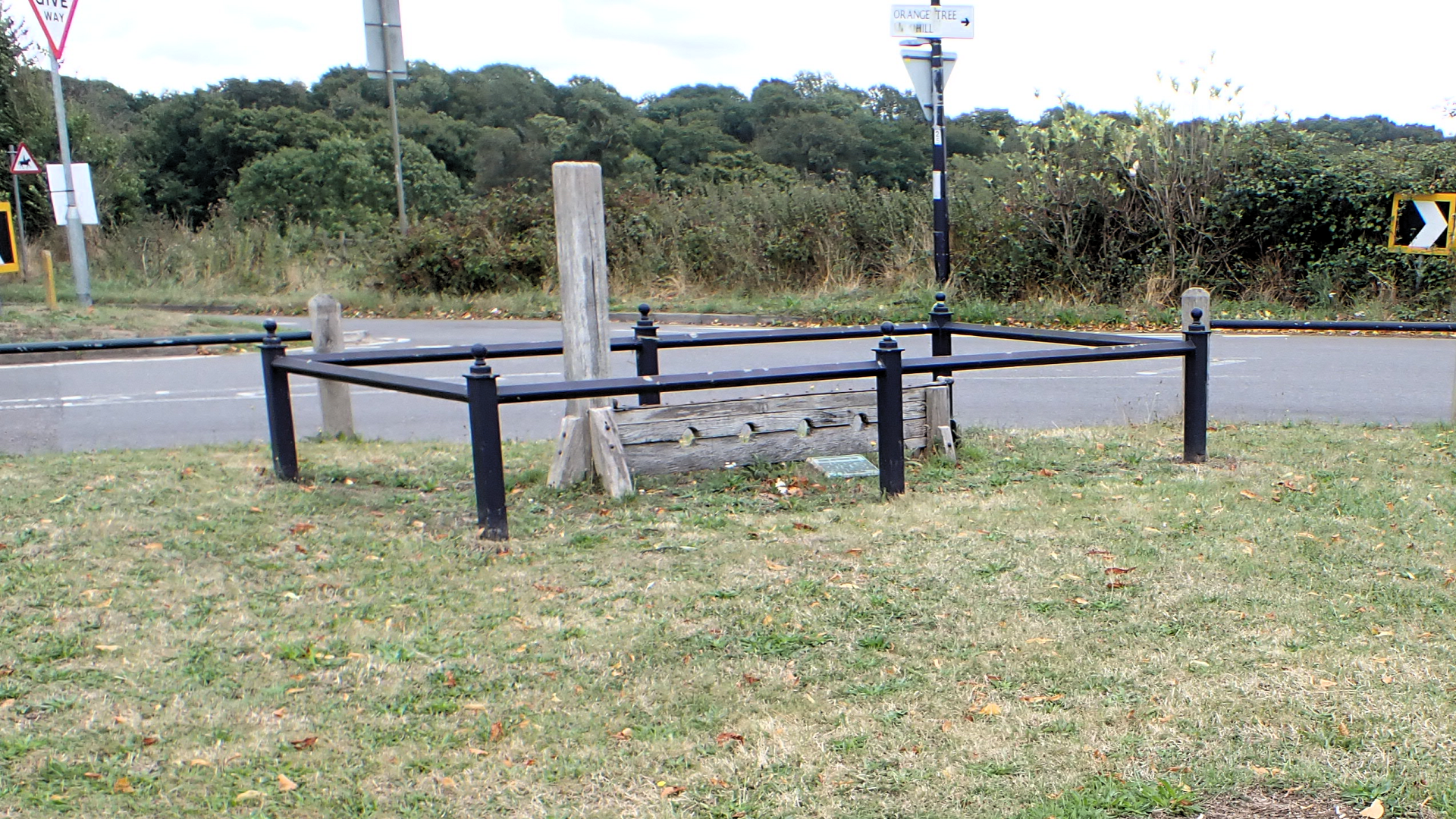
Stocks and Whipping Post © Raymond Small 10/09/2024
The large tree that once stood near to the stocks has now disappeared.
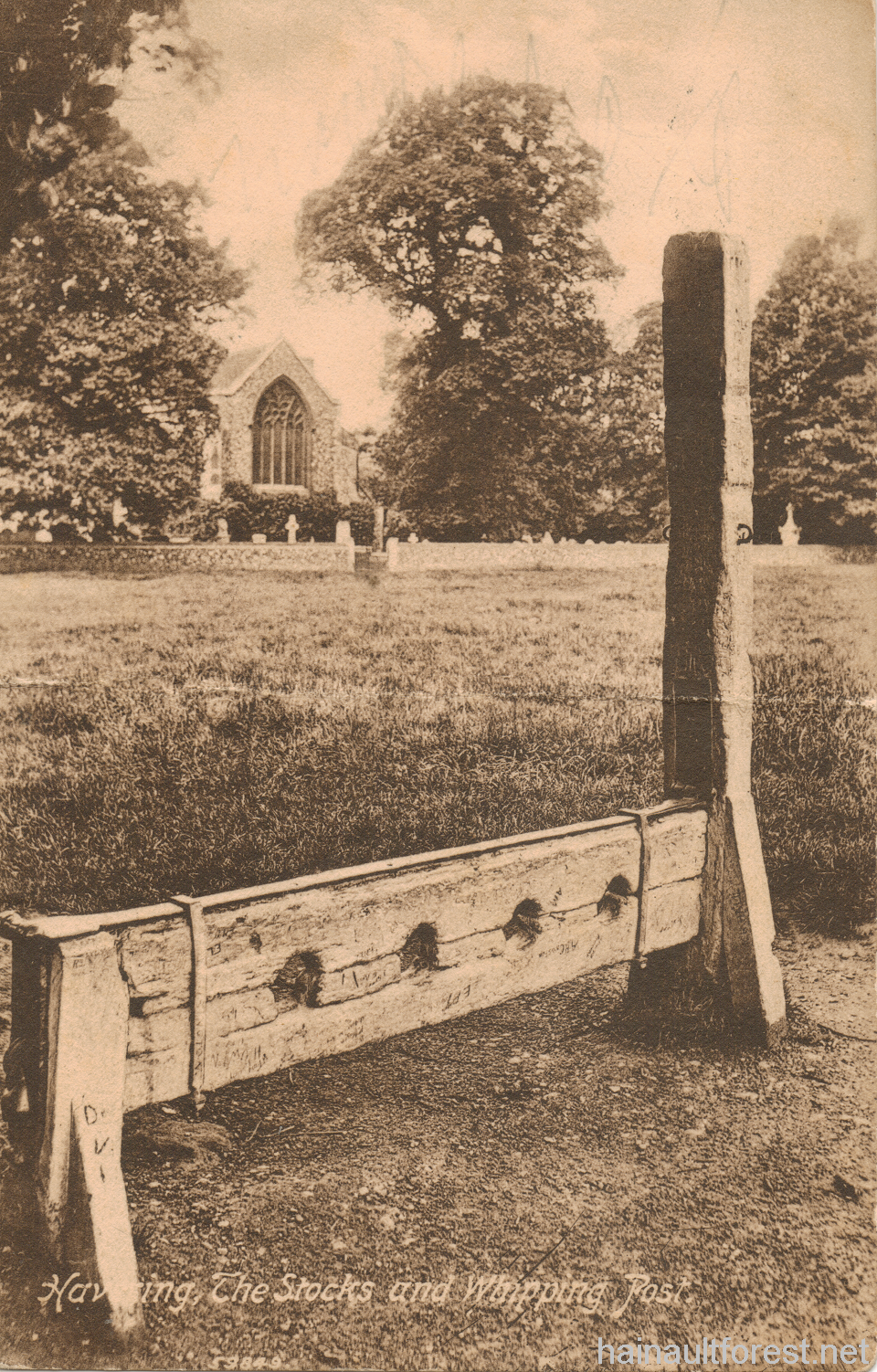
Postcard publisher: A.H. Burgess, South Street, Romford
Time spent in the stocks depended on the seriousness of the crime, normally varying from half-an-hour to a whole day. A whipping post at the side of the stocks was sometimes used as extra punishment.
"Dear Lewis, Your card to hand. Sorry could not come but will see you next Monday evening at 6 o'c. Amy sends her kind regards. We are having a fine quiet time here with fairly good weather but very windy. Trust you are well. Kind regards Sam" Postmark: SP 9 (19)12
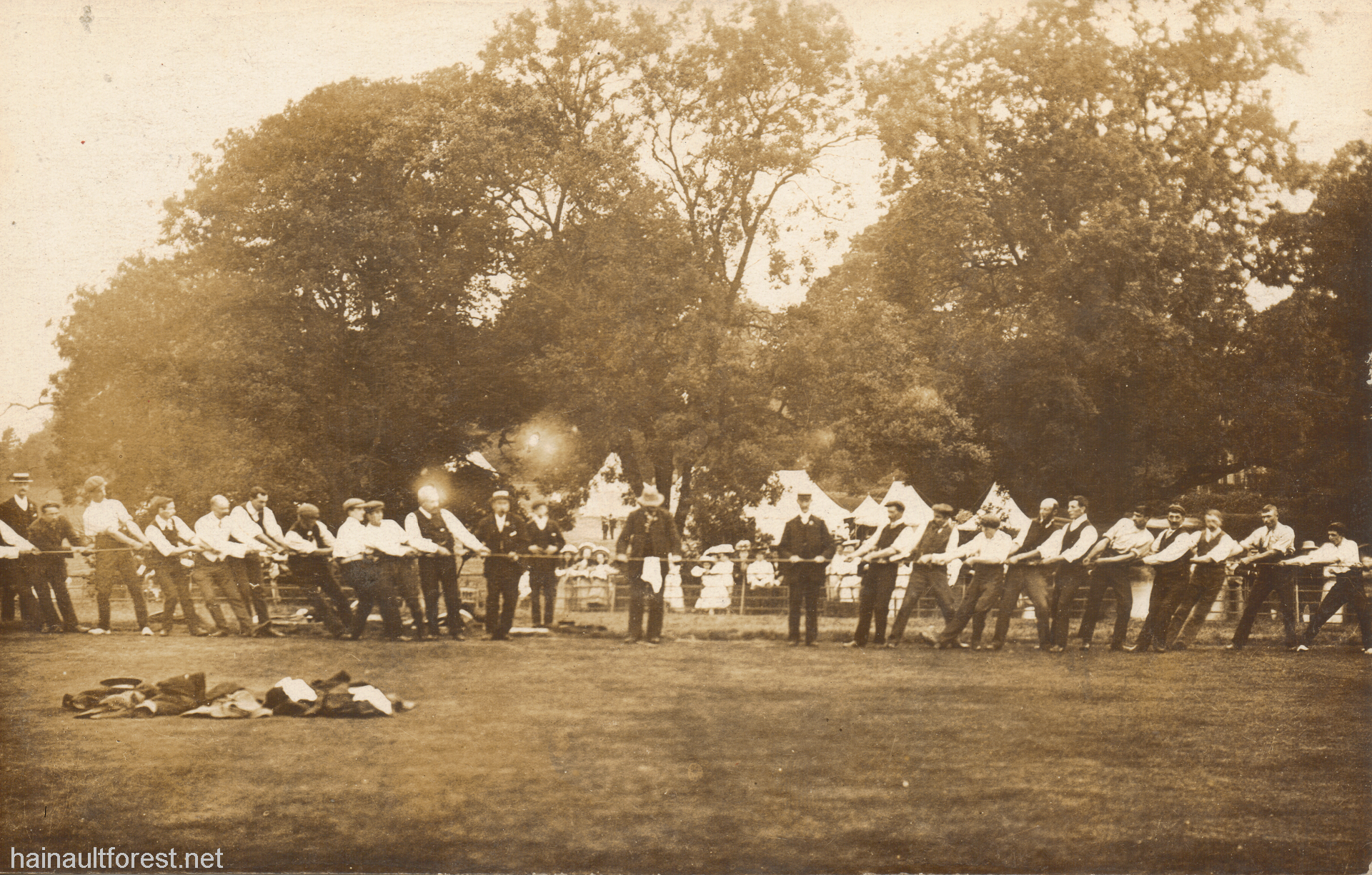
Postcard publisher: unknown. Postcard: unused.
Fun and games at the Havering Garden Show of 1907. Tug of war had a strong following around that time and it was even an athletic event in the Summer Olympics from 1900 until 1920. In 1908 the Olympic podium was occupied by three British teams. Whether any of these athletes were involved is unknown!
Written and researched by Raymond Small. Pictures courtesy of the Daylop Collection.
© hainaultforest.net. All rights reserved.


